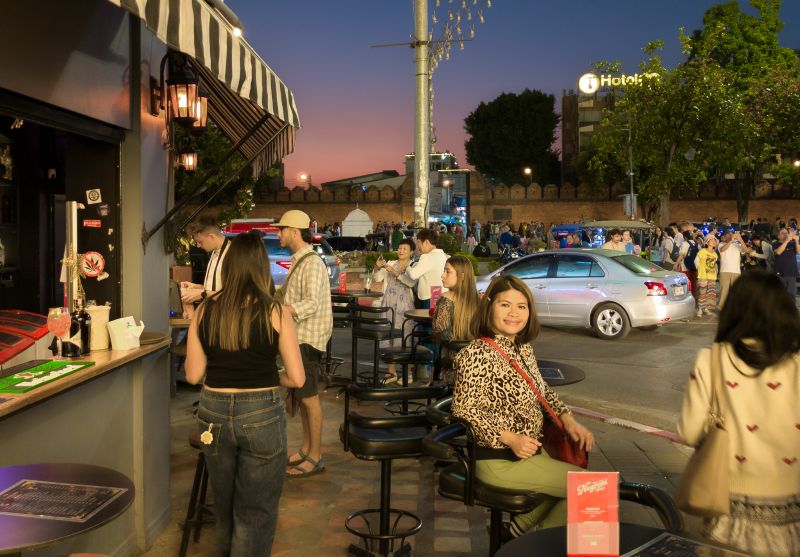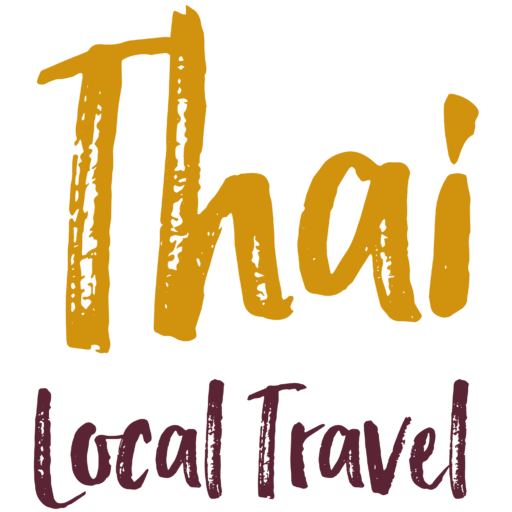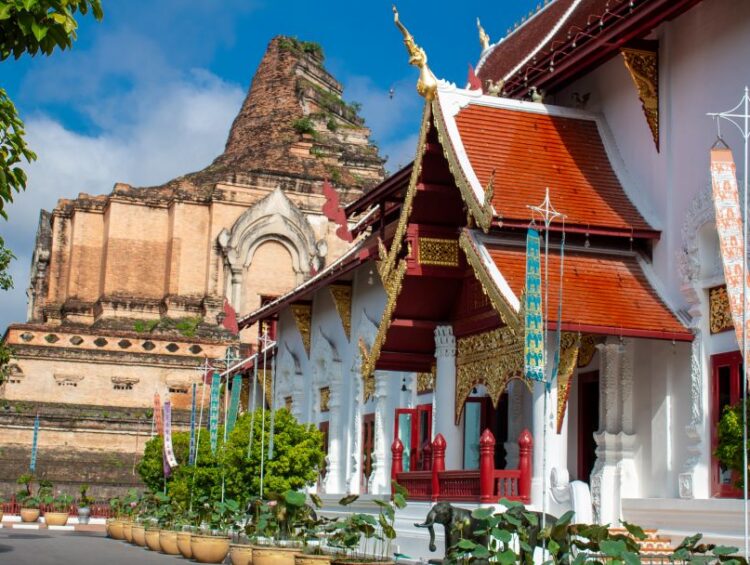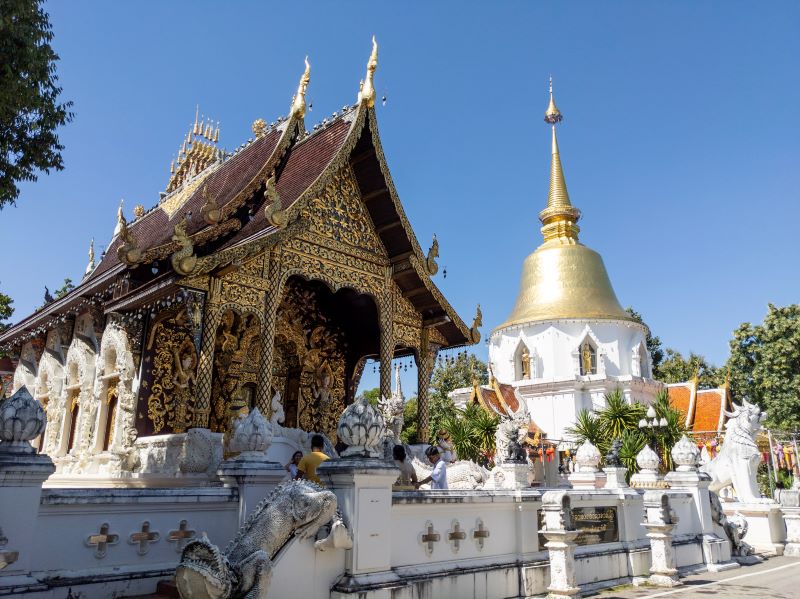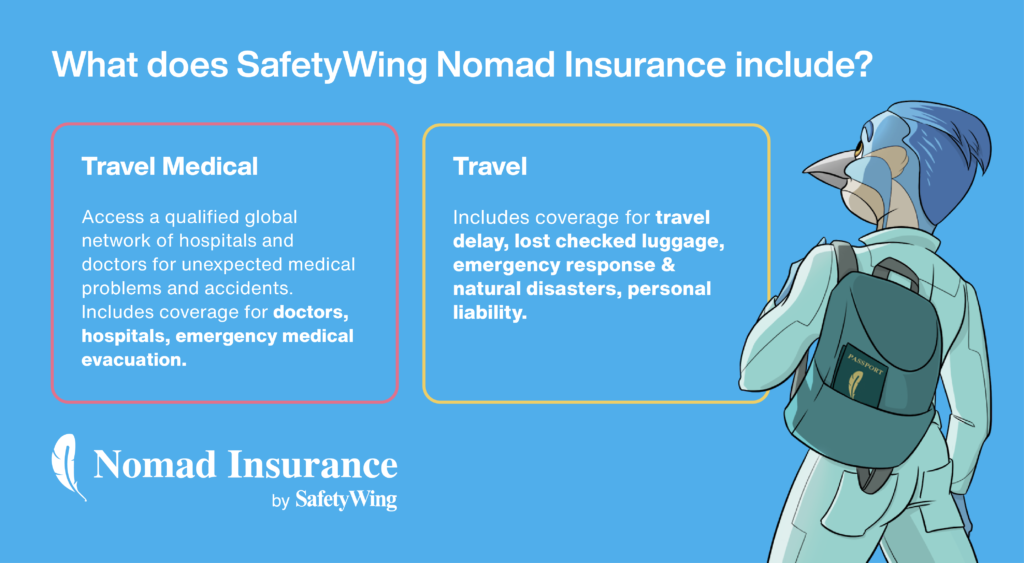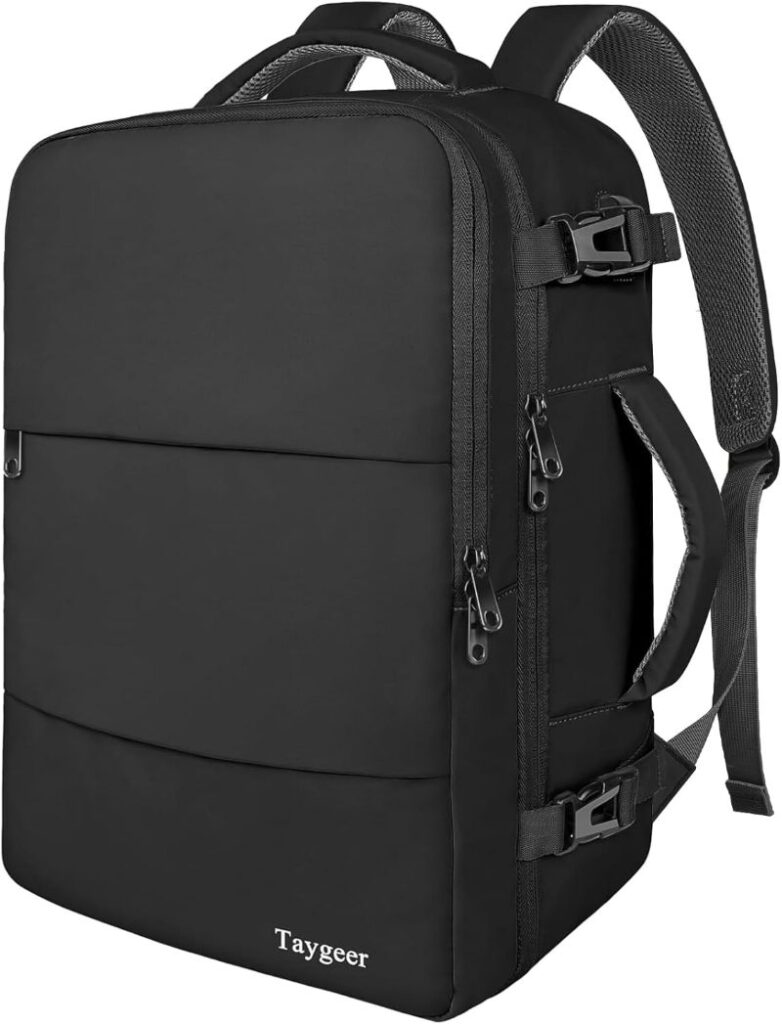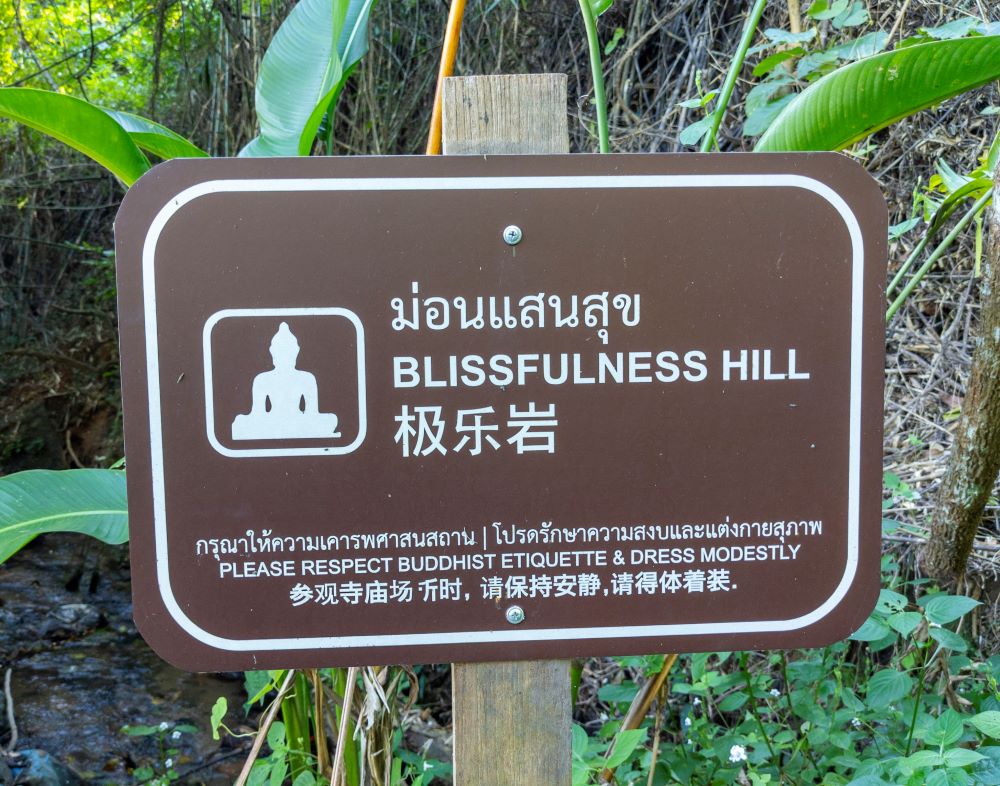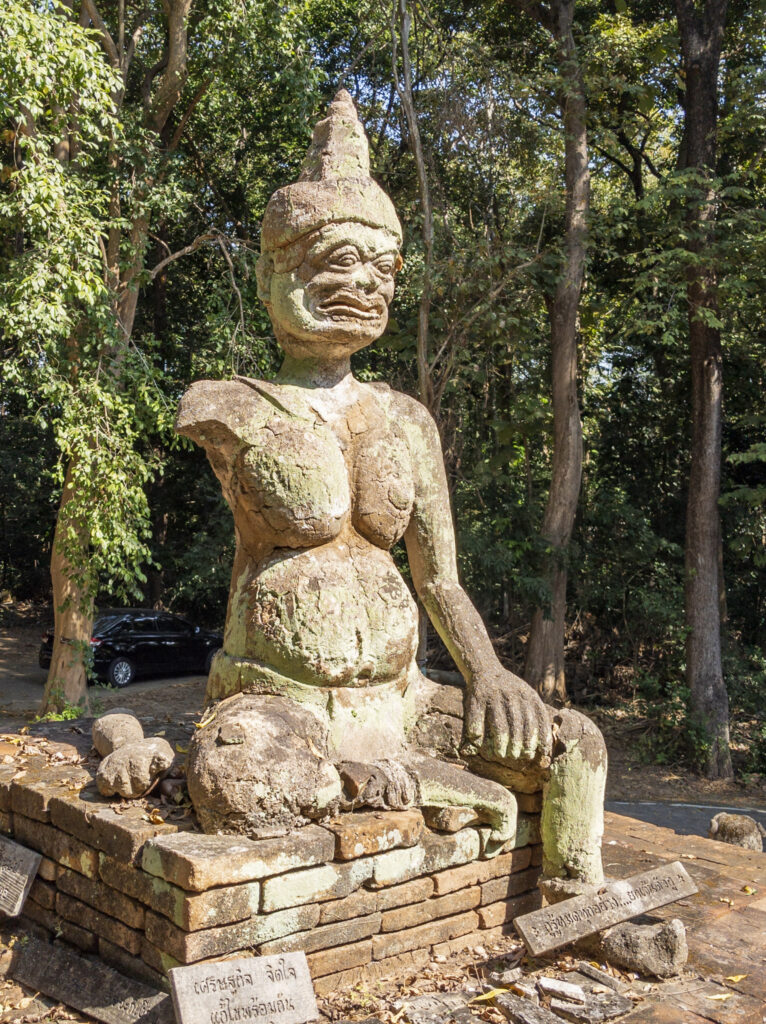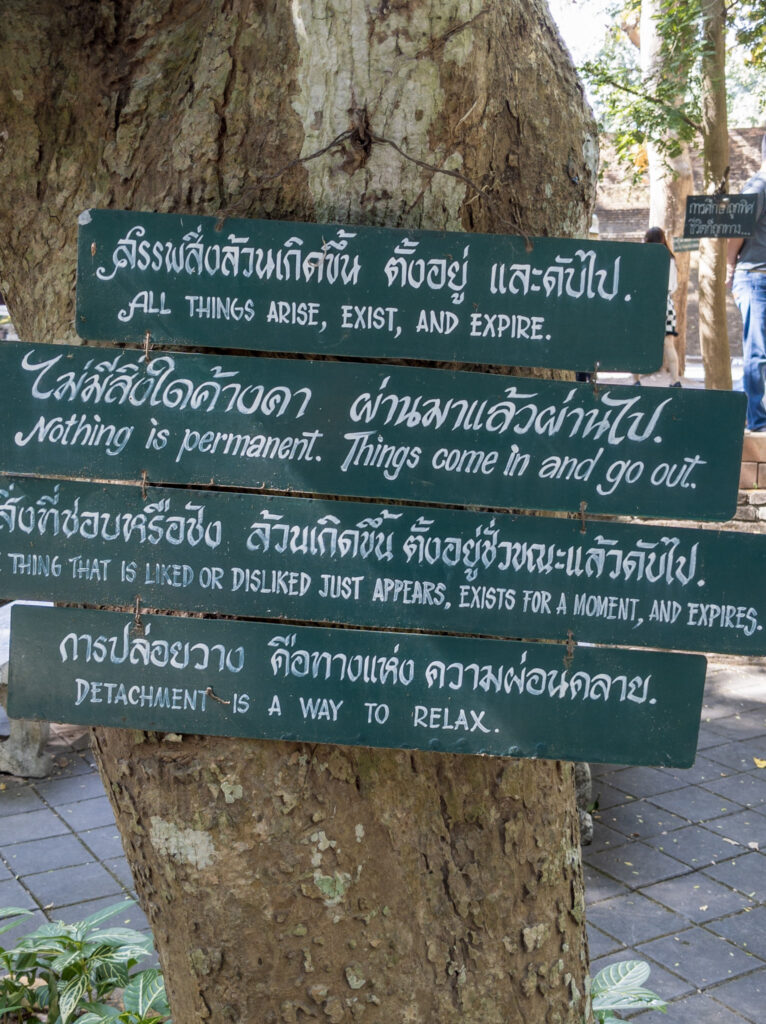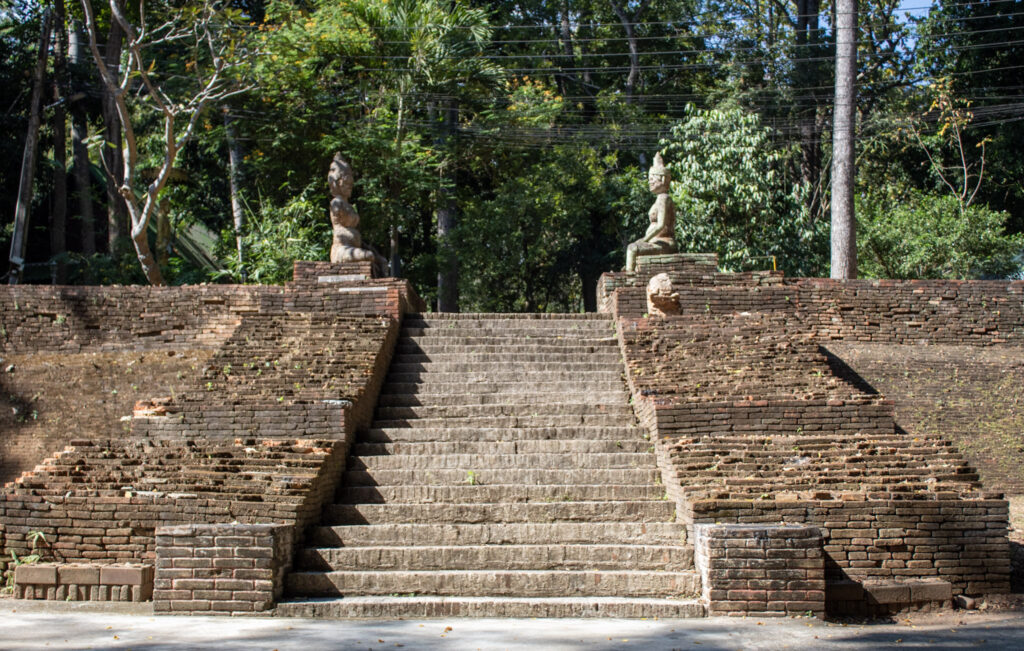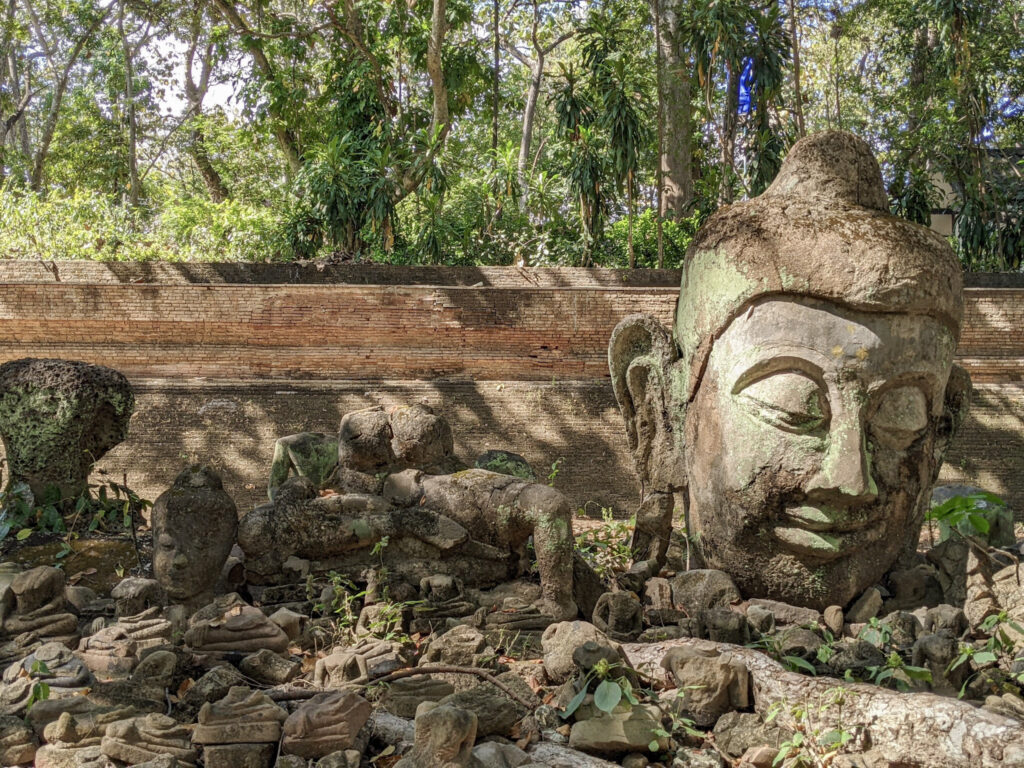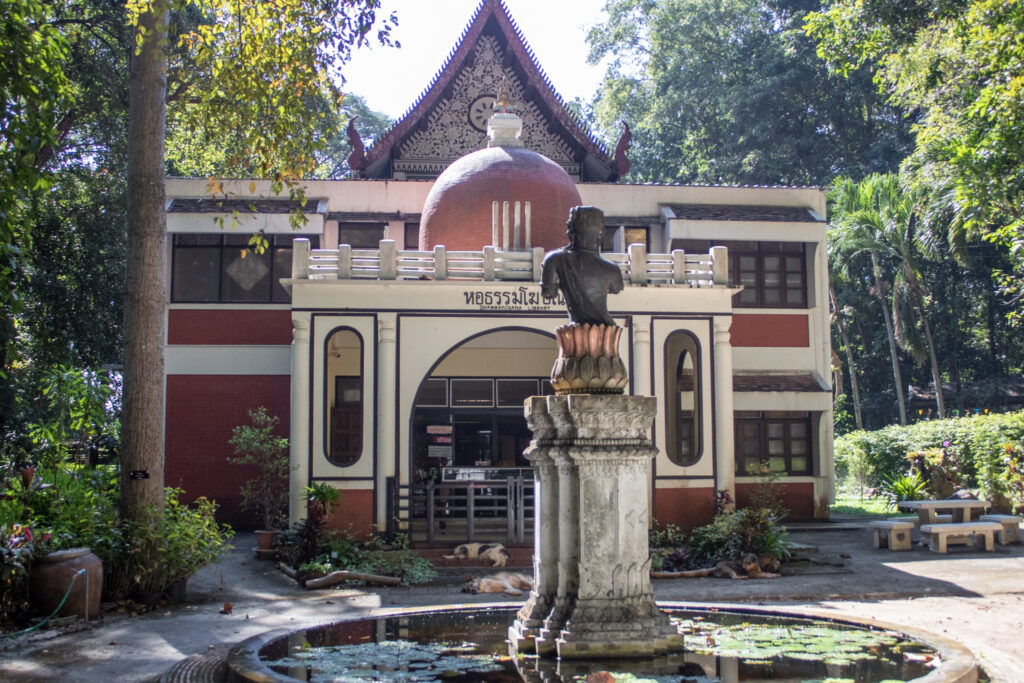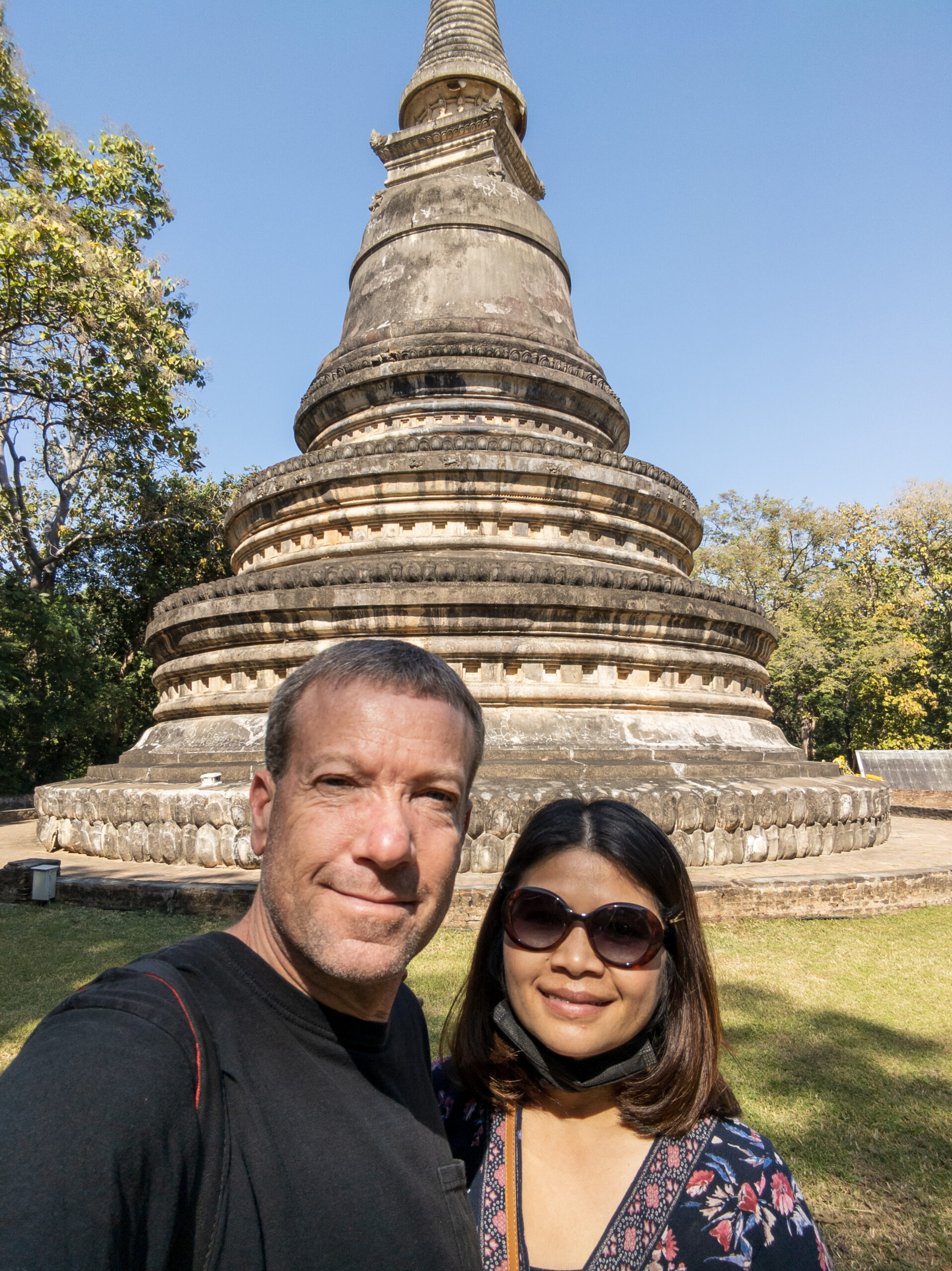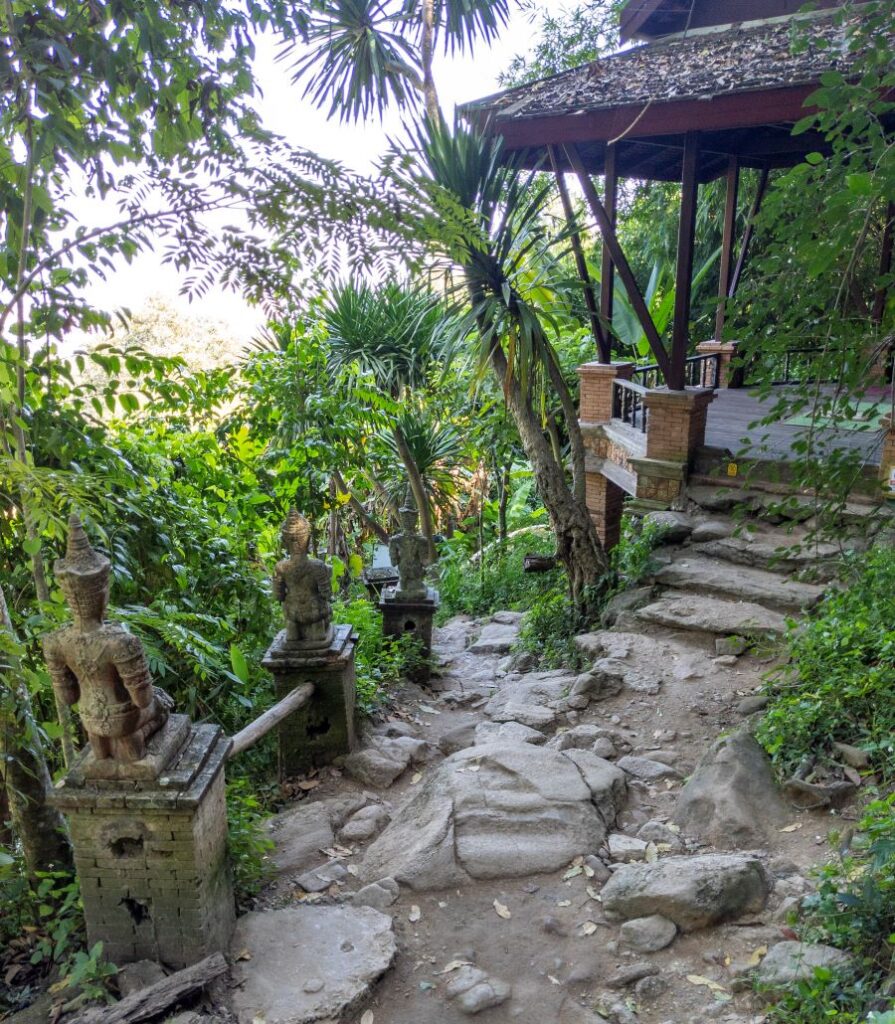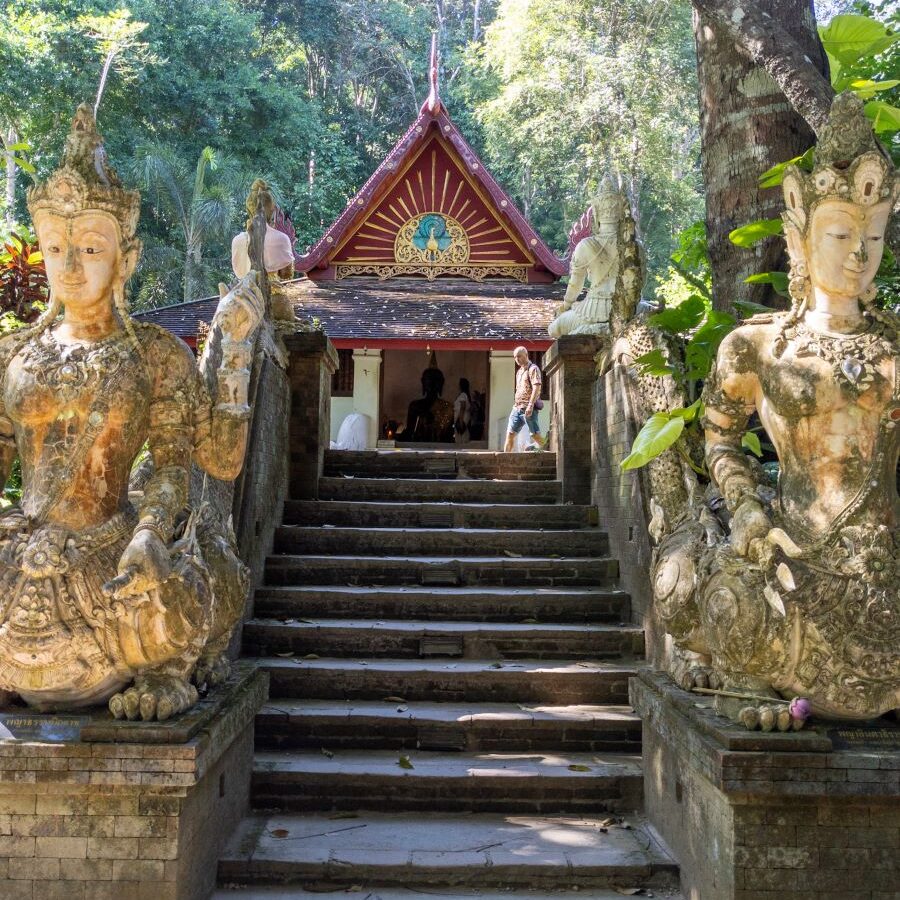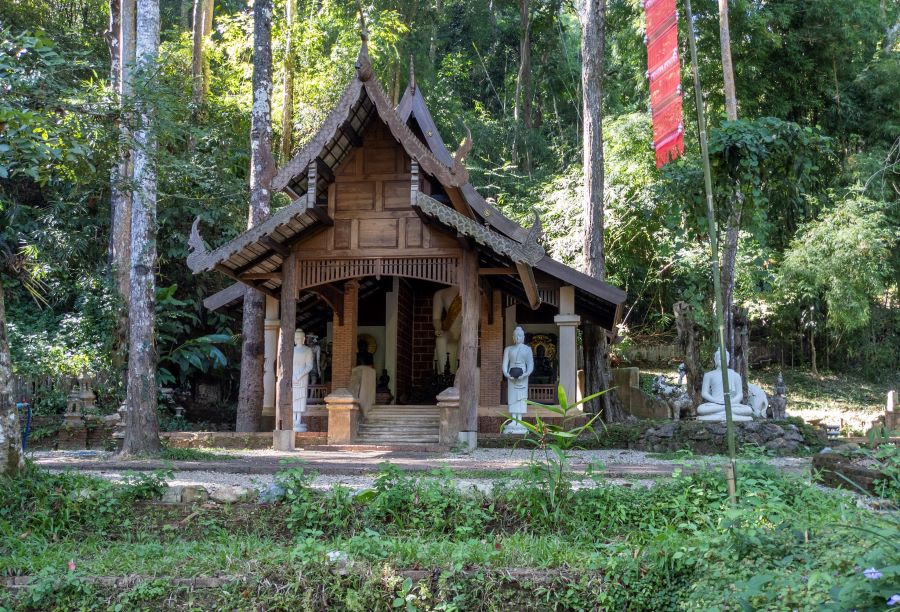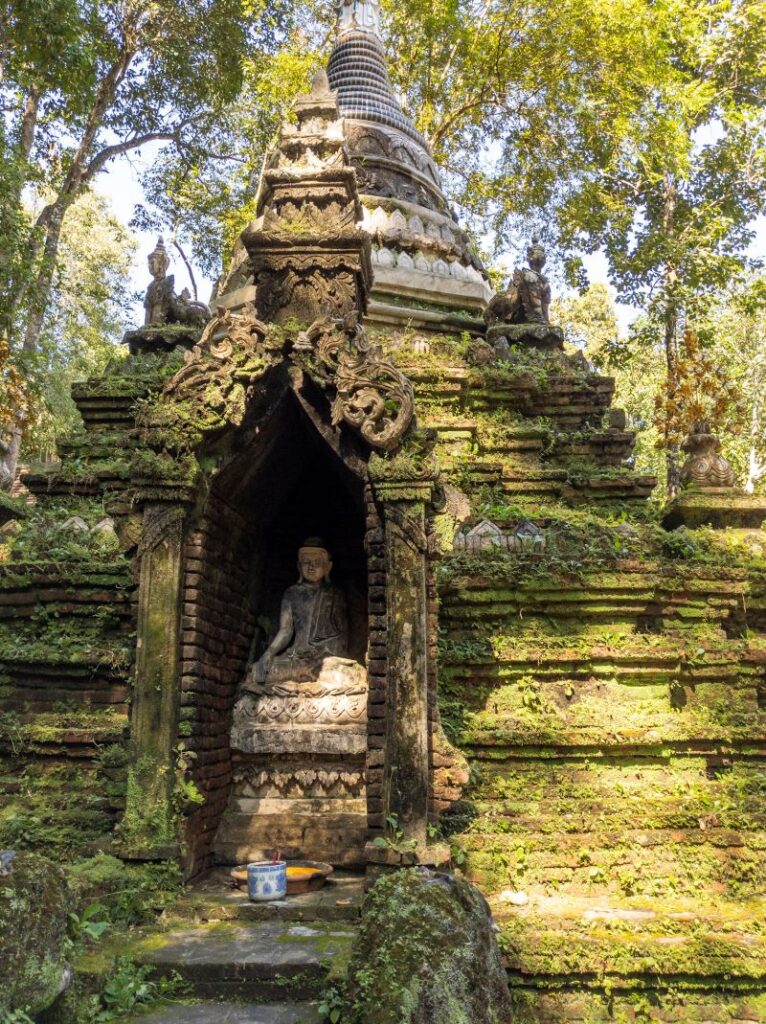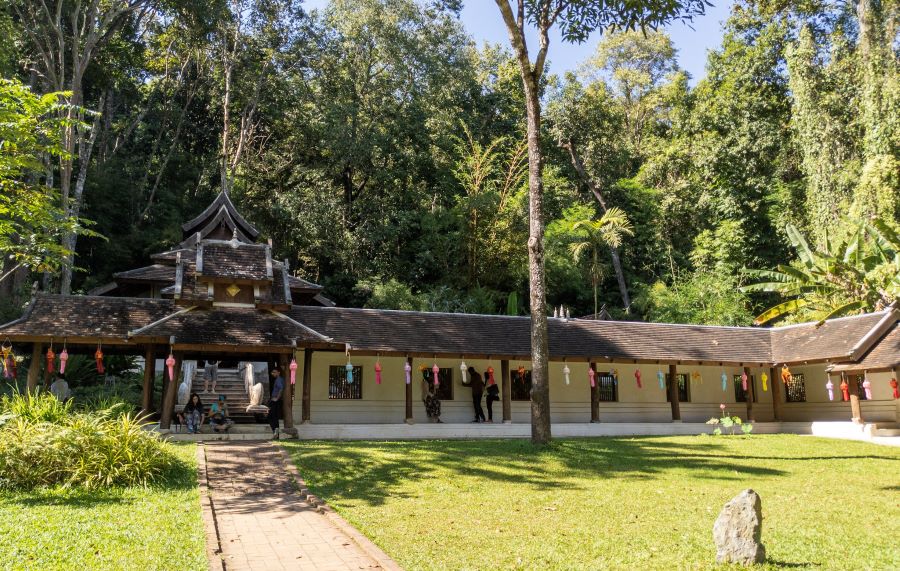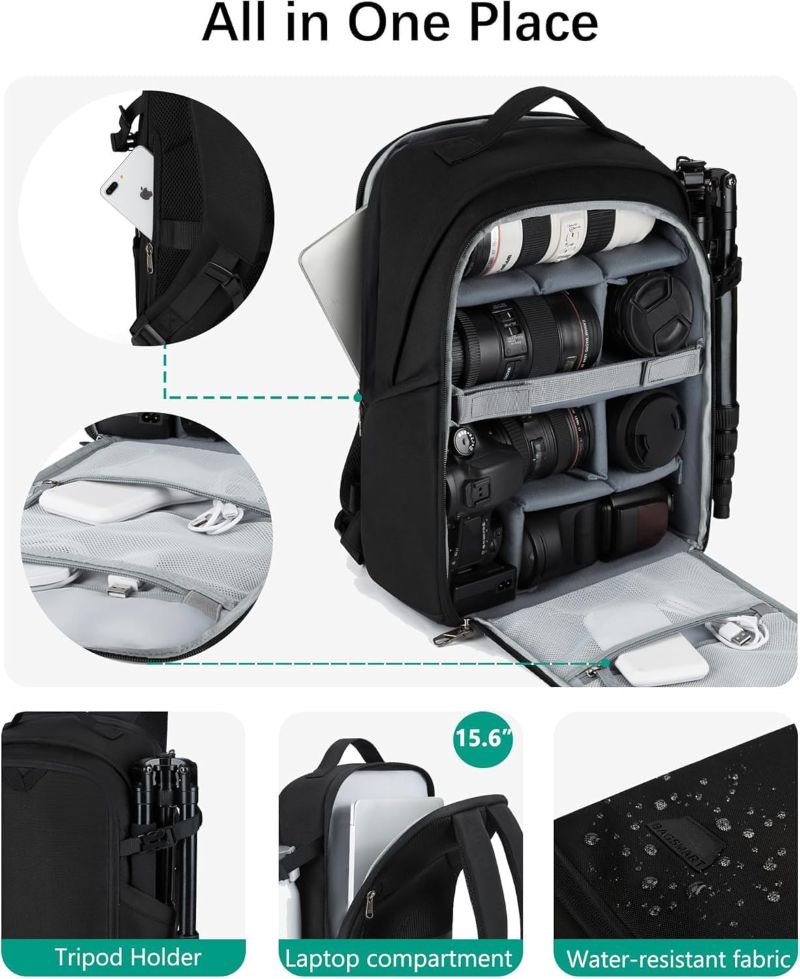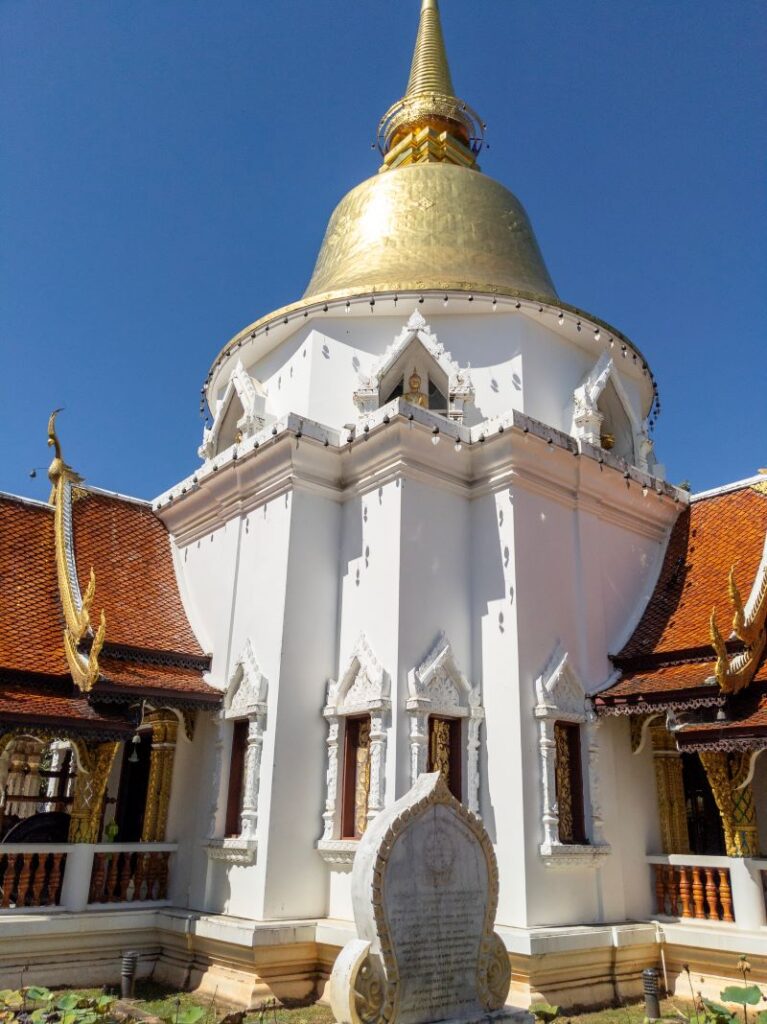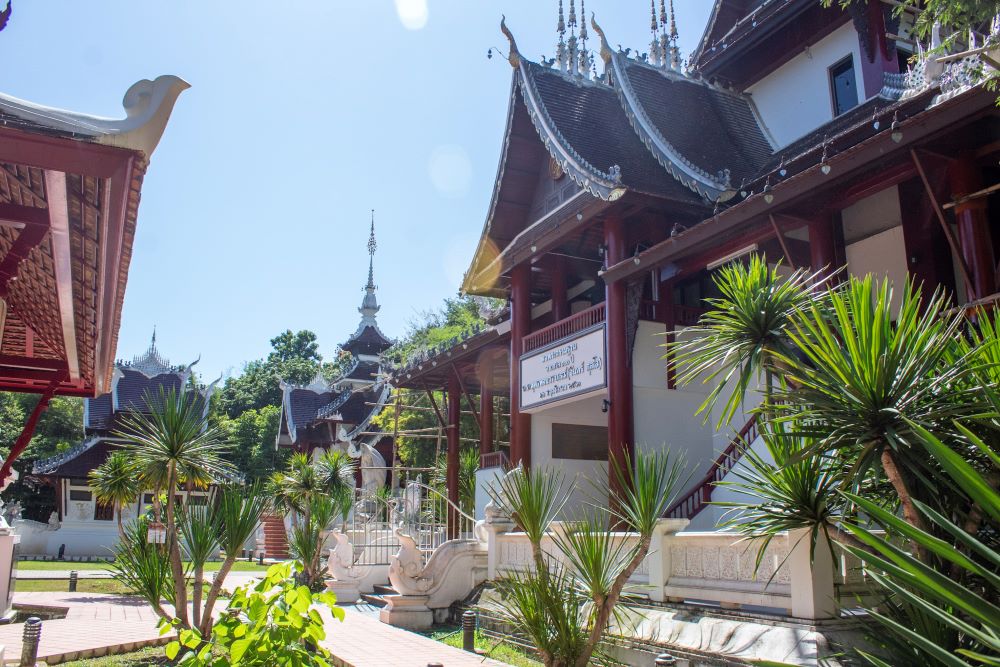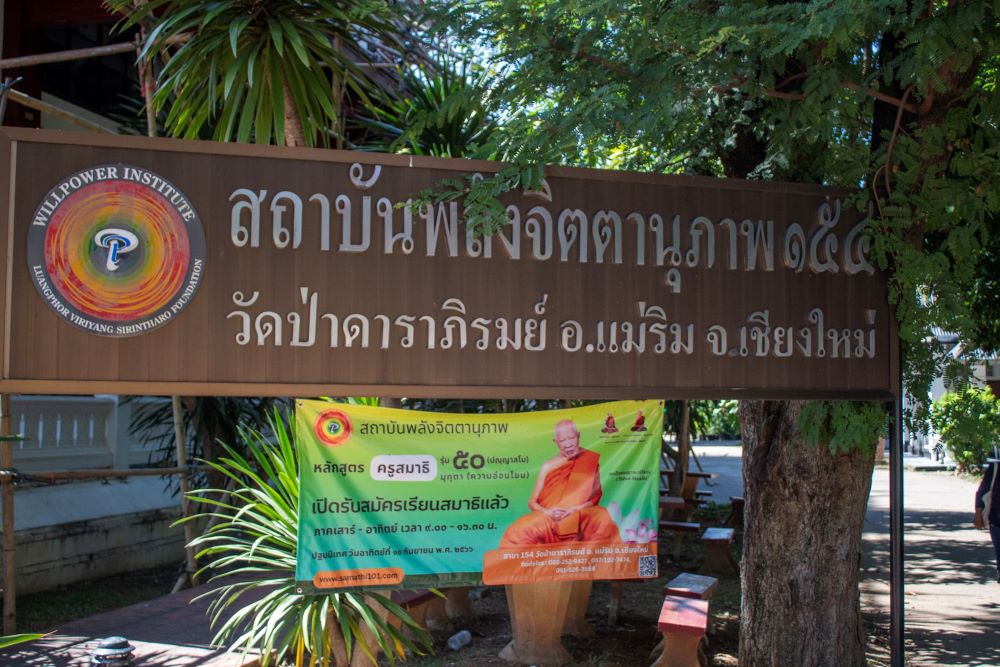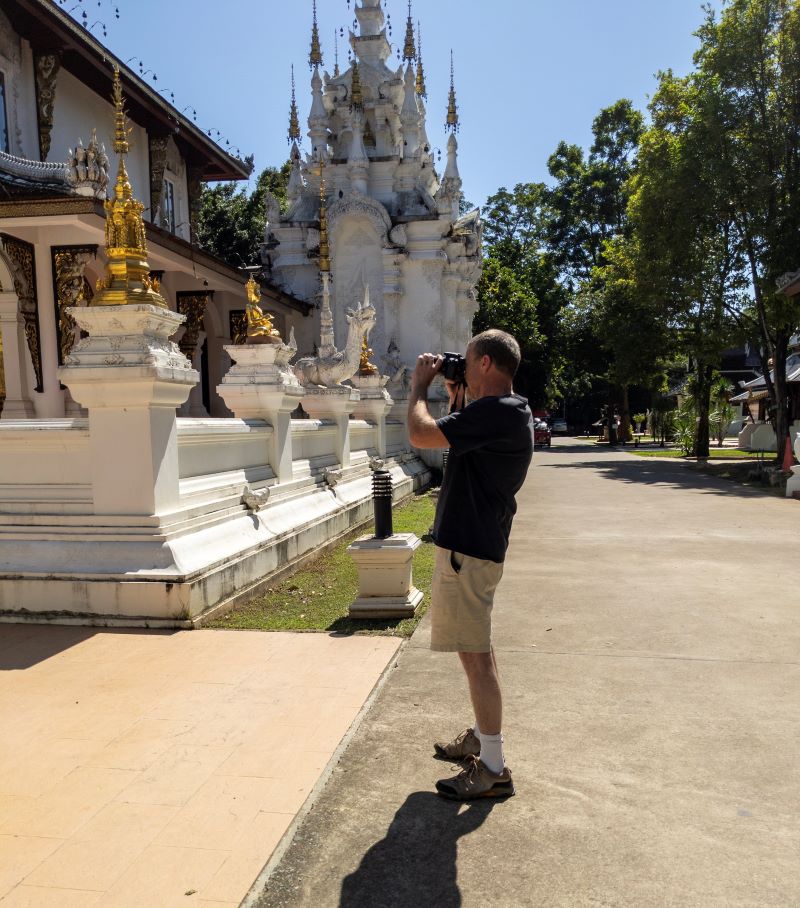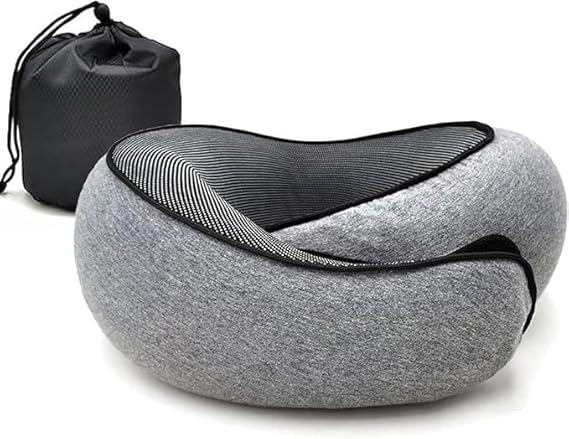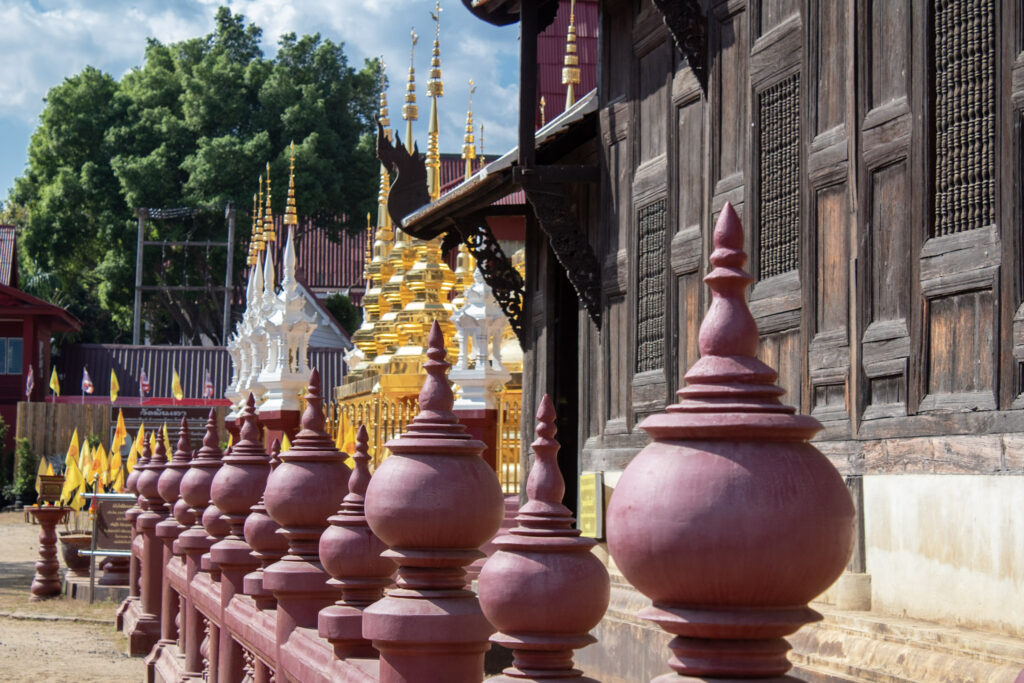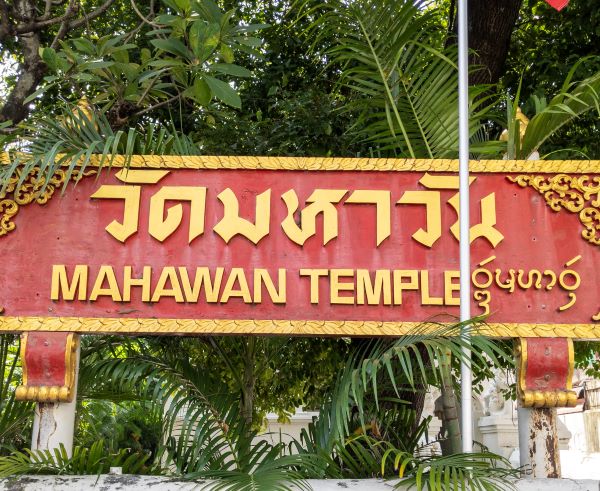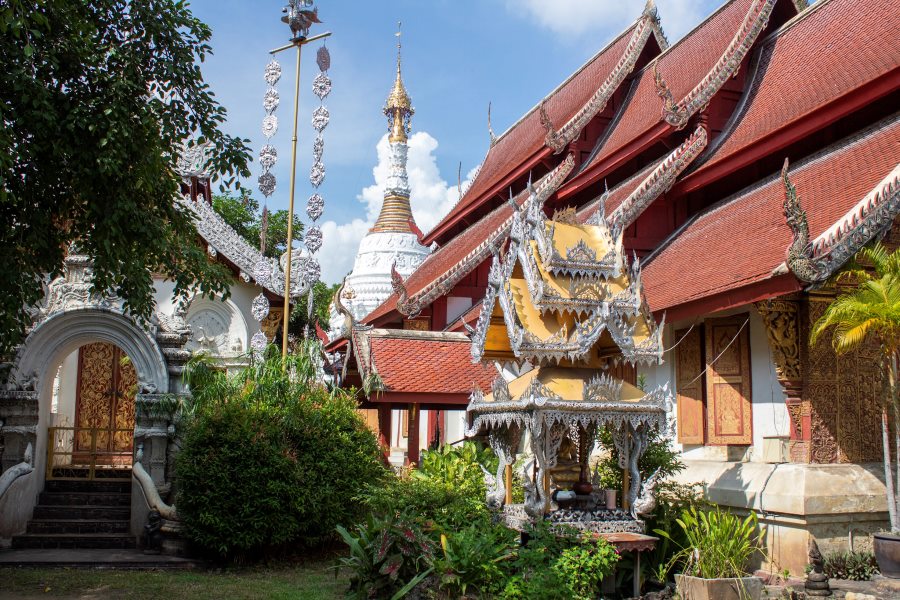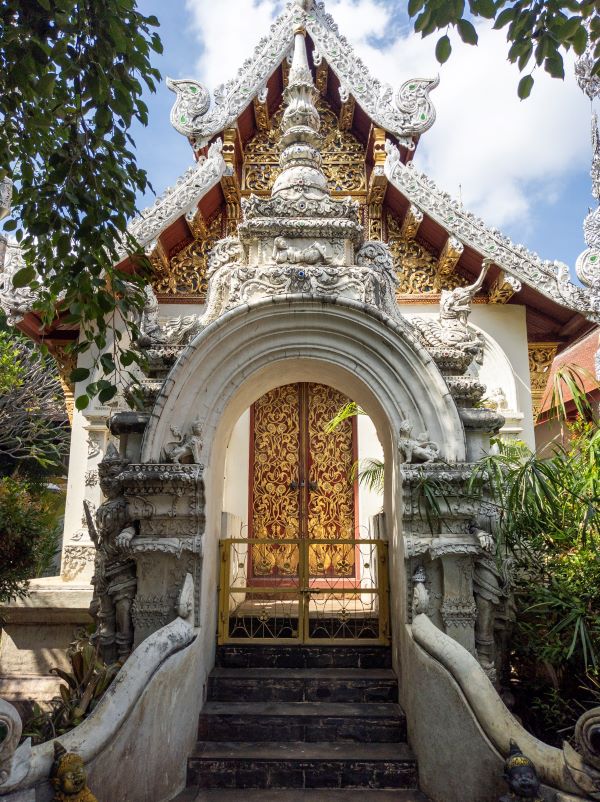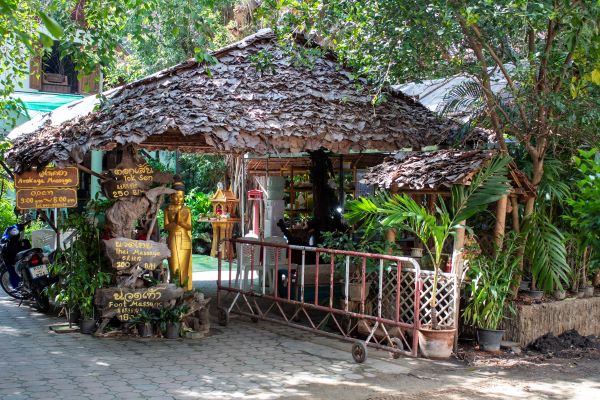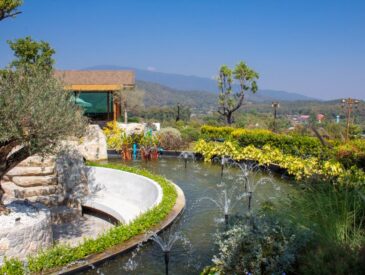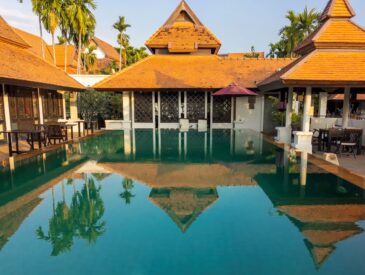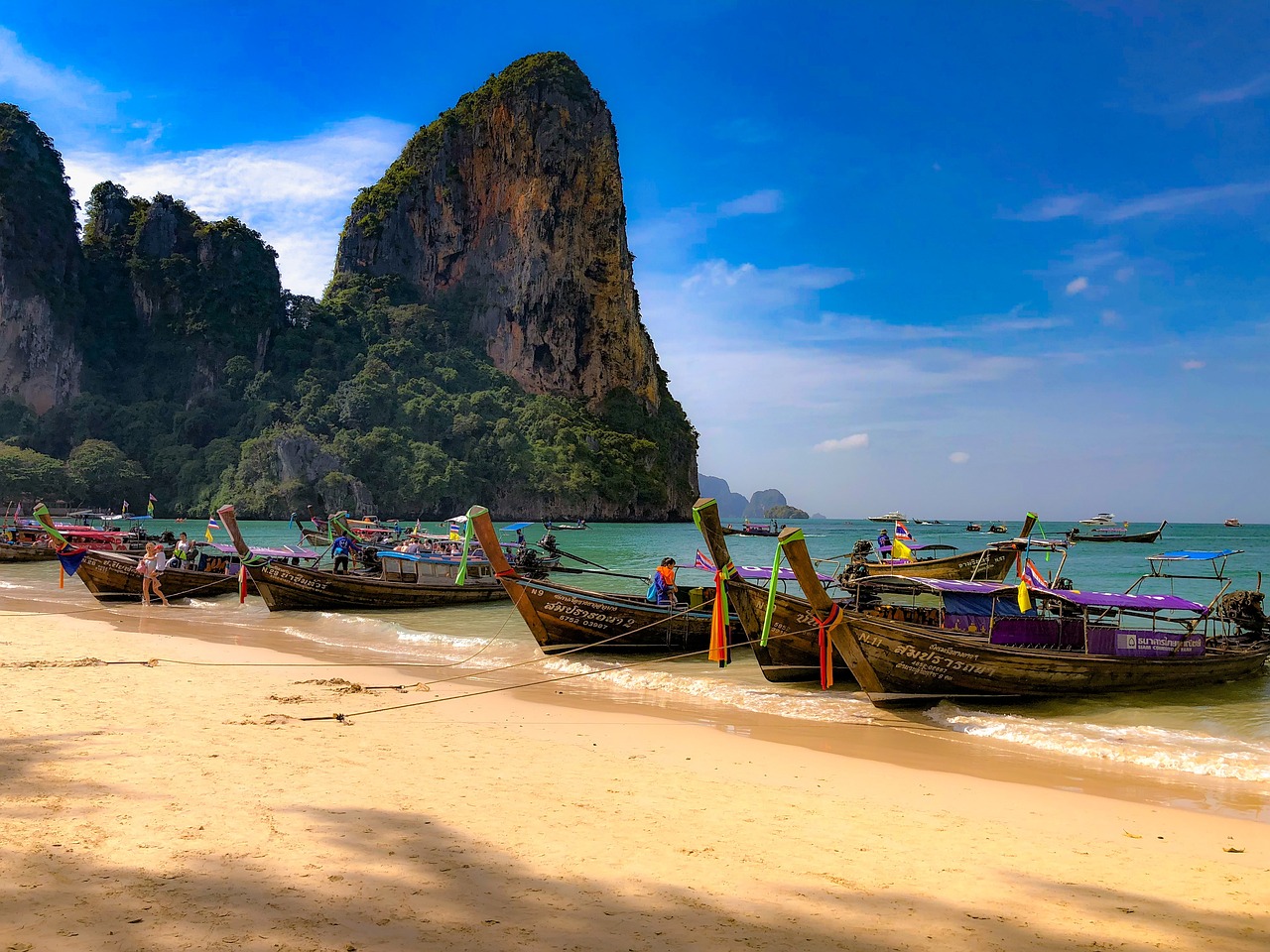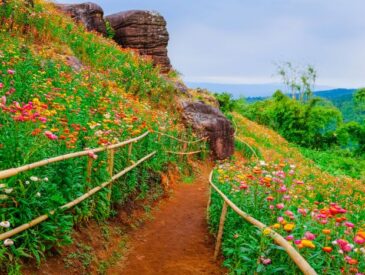(Updated Nov 2025) It goes with saying Thailand is famous for its Buddhist Temples dating back over 700 years to the end of the 13th century. If you are visiting Chiang Mai, these are the most amazing must see temples you don’t want to miss.
These must see temples are popular with tourists, mainly due to their grandeur and history. Most are still active temples, with many schools for monks. Some also have meditation centers that are open to tourists.
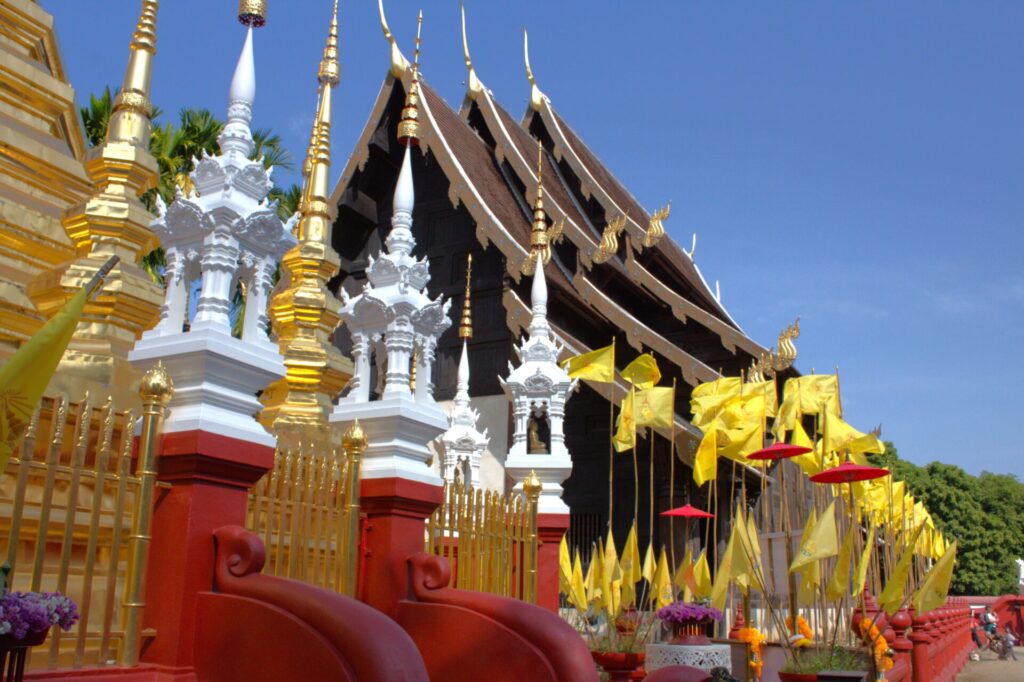
Chiang Mai city alone has over 300 temples. So these are just a few of the must see temples that are close to the city center. Travel outside the city center to see other spectacular must see temples. To find out our favorite ones to visit outside the city center, read The Best 5 Temples Outside of Chiang Mai’s City Center. Such as Wat Pa Dara Phirom shown here, 20 minutes north off route 107.
My favorite times to visit these must see temples is in the off tourist season, and on a weekday if you can. Some of these get very crowded on the weekends. Most of this list are located in the old city, which you can easily walk to if you are staying in that area. Others are a short ride away on the edge of the city.
The great thing about staying inside the the Old City, is that you can walk to most must see temples. Actually, it may take a while to get to each of them if your like me. Since I need to stop and look at every street and building along the way.
For more on areas to stay in Chiang Mai; The Best Areas In Chiang Mai To Stay.
When in Thailand please respect the culture and rules when entering temple grounds. They are active temples and your welcoming hosts are inviting you into their homes, and where they spend their days.
I recommend leaving money in the donation boxes, it really helps maintain these beautiful treasures and keep them active.
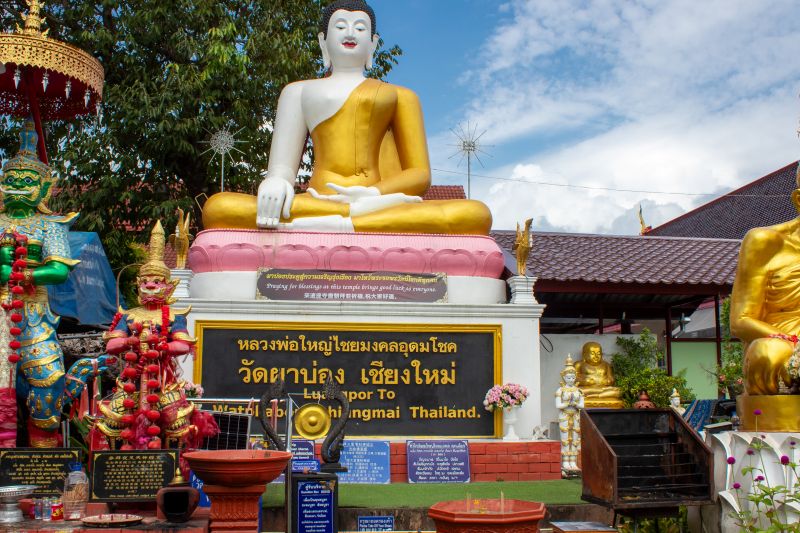
Temple List:
- Travel Resources
- Use Proper Etiquette
- Wat Umong
- Wat Pha Lat
- Wat Pa Dara Phirom
- Wat Ket Karam
- Wat Chedi Luang
- Wat Phan Tao
- Wat Pra Singh
- Wat Phra That Doi Suthep
- Wat Chiang Man
- Wat Mahawan Temple
Travel Resources
Agoda is the best place to book cheap affordable hotels in Thailand, especially near national parks. They also book flights as well.
Expedia is my favorite place to book flights, hotels, cars, and more. Their group includes Hotels.com and Vrbo for vacation rentals.
Viator is the top choice for activities. Book everything from a waterfall tour to scuba diving, jungle trekking to cooking classes.
12Go is the top transportation source for Asia. From busses to trains to regional flights.
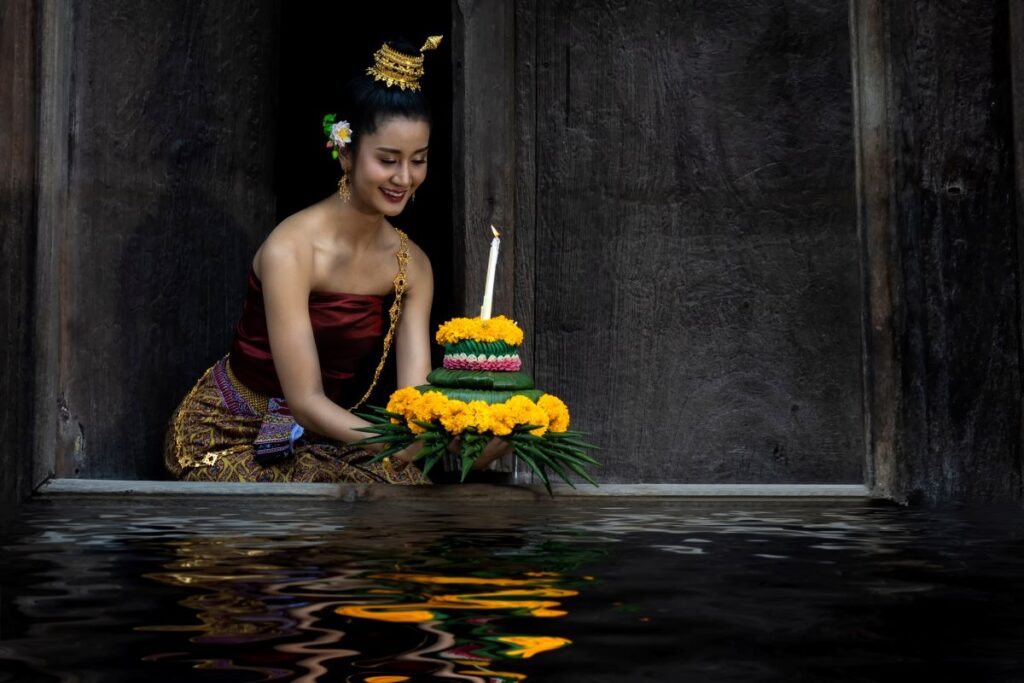
Use Proper Etiquette
Most temple grounds will have signs before you enter, but don’t be a unprepared tourist. Know before you go to these and all must see temples. Please respect their culture and traditions.
Dress respectfully when you visit any temple in Thailand. Make sure your shoulders are covered (no vests, tank-tops or spaghetti straps). Although skirts or shorts are acceptable at many temples, they should be smart and at least knee-length.
Take off your shoes before entering the temple buildings. If you are wearing a hat, that should also be removed before going inside.
Don’t sit on the platform or chairs reserved for monks. Monks are prohibited from touching women and women should never hand anything directly to a monk.
For more tips on traveling to Thailand, read our Tips & Advice.
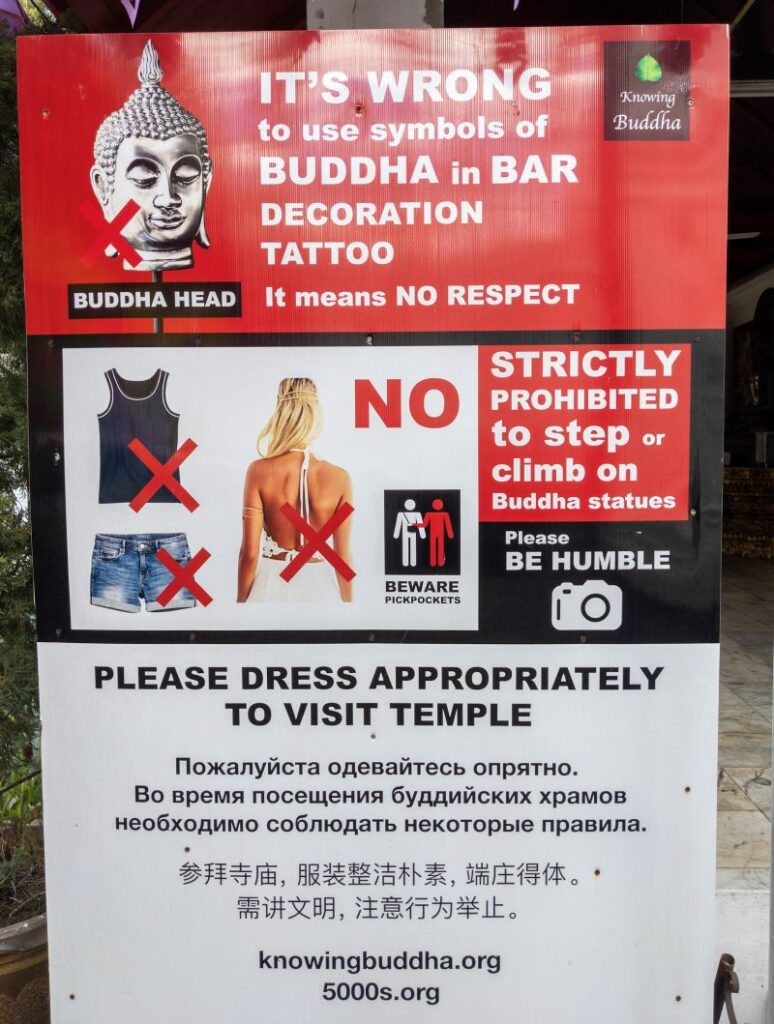
Wat Umong
Wat Umong Suan Phutthatham is probably my top two favorite must see temples. Located in the forest, under ground, above ground, buildings and sights are all over this ancient Buddhist temple. On a hot day this might be the best one to visit, since you can find lots of shade. The temple was built in 1296 by King Mangrai of the Lan Na dynasty. As a result you will find Lanna style buildings you will find in many of Chiang Mai must see temples.
Located at the foot of the mountains of Doi Suthep National Park, east of the city center. Wat Umong is hidden in the corner of the city, but is located not far from Chiang Mai university and the popular western area Nimmanhaemin. If your looking for a meditation center to stay and practice this is a popular option.
You should give yourself several hours to really enjoy the large grounds that feature trails, multiple buildings, and the many parts of the temple. The entire Wat Umong complex consists of 37.5 rai (15 acres) of wooded grounds. You can feed the fish, turtles, and ducks in a large pond. “Talking trees” have words of wisdom in Thai and English. My favorite part was reading the proverbs, scattered around the grounds.
The Meditation Center is one of the more popular ones in Chiang Mai for locals and tourists alike. My wife and her cousins have spent a week there many times. Overnight stay in dorm like facilities. See their website for more details.
The Temple Grounds: Being a large property there are many things to see and do on the grounds.
- At the entrance there is a Library, Thammakos Library.
- There is the Dharma Mystery Theater where you can watch movies to find the essence of Dharma.
- Open Air Museum. An area I thought is very interesting and great for photography.
- Tunnel Entrance
- Stairs to the Pagoda above.
- Large pond area with wildlife. Also where many small houses are.
Tunnels go under ground below where the main Chedi sits.
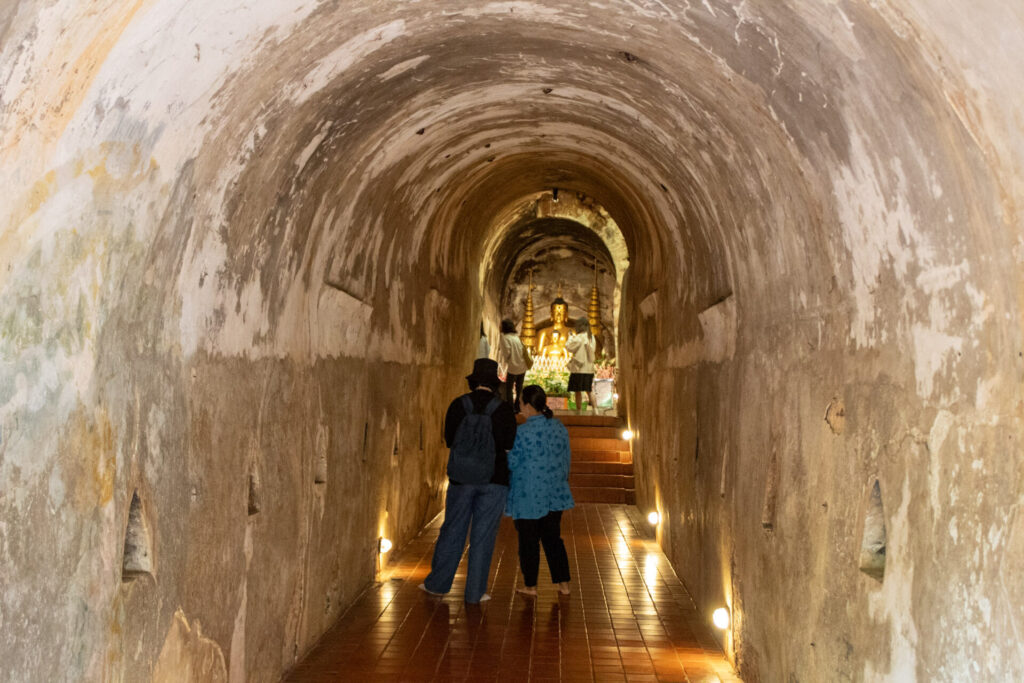
Wat Pha Lat
On the mountain side of Doi Suthep-Pui national park, above Chiang Mai city, sits Wat Pha Lat. I accidently stopped with a friend to check it out, and it quickly became one of my best 5 temples to see. I knew about it, as it is on the local hiking trail called Monk’s Trail. Which was used by monks to walk up to Wat Doi Suthep.
The temple is located on route 1004 half way up the mountain on your way to Wat Doi Suthep. Most people just pass by on their way up to Doi Suthep. It is only about 15 minutes from the city, depending on a couple traffic lights!
What I love about it is that it is not your typical looking temple. Similar to Wat Umong, it is shady is the forest, with smaller unique buildings and structures, such as the river running through it.
According the the temple plaques, the construction is not know. But the temple name appeared during the time of Kin Kue Na when he rode his elephant to bring relics of the Buddha from Sukhothai to be enshrined at Wat Doi Suthep and stopped at Pha Lat for a rest.
The stupa is a Bagan-style round stupa, surrounded by a circumambulatory path. It has a niche enshrining the Buddha image on the south side and stucco lions and deities at the corners of the base.
The Hall of Buddha is in a state of ruin, only its base remains.
Wat Pa Dara Phirom
Wat Pa Dara Phirom is a favorite of the must see temples for locals. Many tourist don’t know about it, since it is not right in the city, but locals I know love it. It is located about 20-30 minutes (depending on traffic) north off route 107 on the way to Mae Rim.
The outside wall itself is impressive and the entrance is guarded by two large lions. The Ubosot and other buildings are Lanna style, but with very intricate details.
Wat Pa Dara Phirom is a 100-year-old first class royal temple, so it is not exactly an ancient one. Since is is relatively newer, the buildings are in better condition that most. Less tourists come here since it in not right in the city. However it is popular to visit for locals. We came on a Sunday, and there were not very many people.
There is a chedi that is accessible, which contains a large Buddha footprint. And something unusual, the chedi does not stand behind the vihara. The Pagoda or the main temple houses a number of valuable like the gemstones, jewels and artifacts of Buddha.
This is a great place to come meditate. There is a meditation center and a school for monks.
Wat Ket Karam
If you are walking around and over by the Warorot Market, which is by the Ping River, you can walk over this this unique temple. I think it is one of the best temples in Chiang Mai. Go across the pedestrian overpass across the river from the Chinatown markets, by the flower market. Cross over Charoen Road, and there will be Wat Ket Karam.
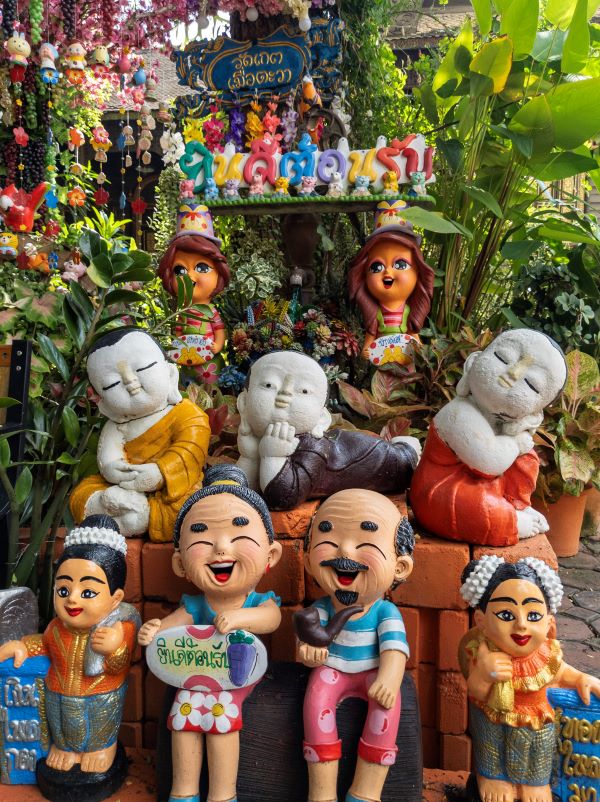
Wat Ket Karam was believed to be built in 1428 during the King Phra Jao Sam Fang Kaen era. He was the King during the Mung Rai dynasty that ruled the region. They also state at the temple that the official original name has never been found. There is a museum that exhibits antiques and old photos that are hard to find, which tell some of the history of Chiang Mai city.
To me what makes this a favorite to see and some of the so called decorations you will find. Also I thought the buildings are a little more unique than others. The grounds are relatively small so this won’t take a lot of time to look at.
The most important buildings are the Lanna style assembly hall and the Stupa.
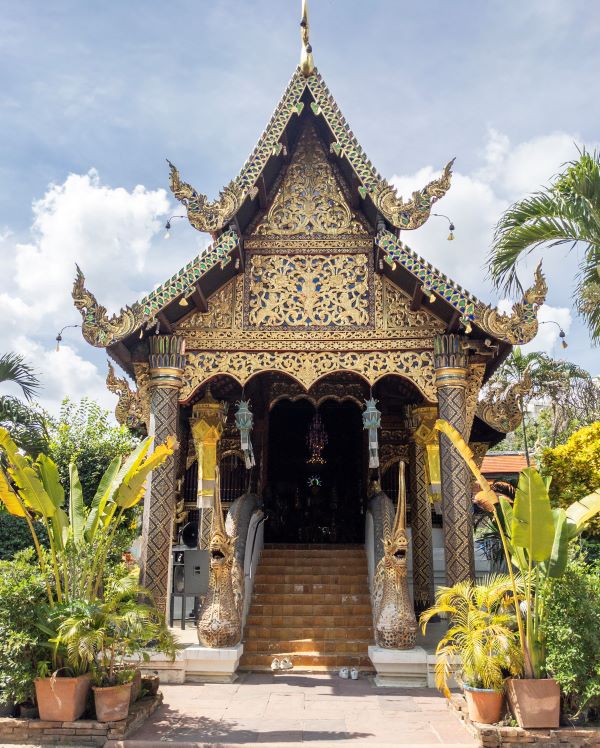
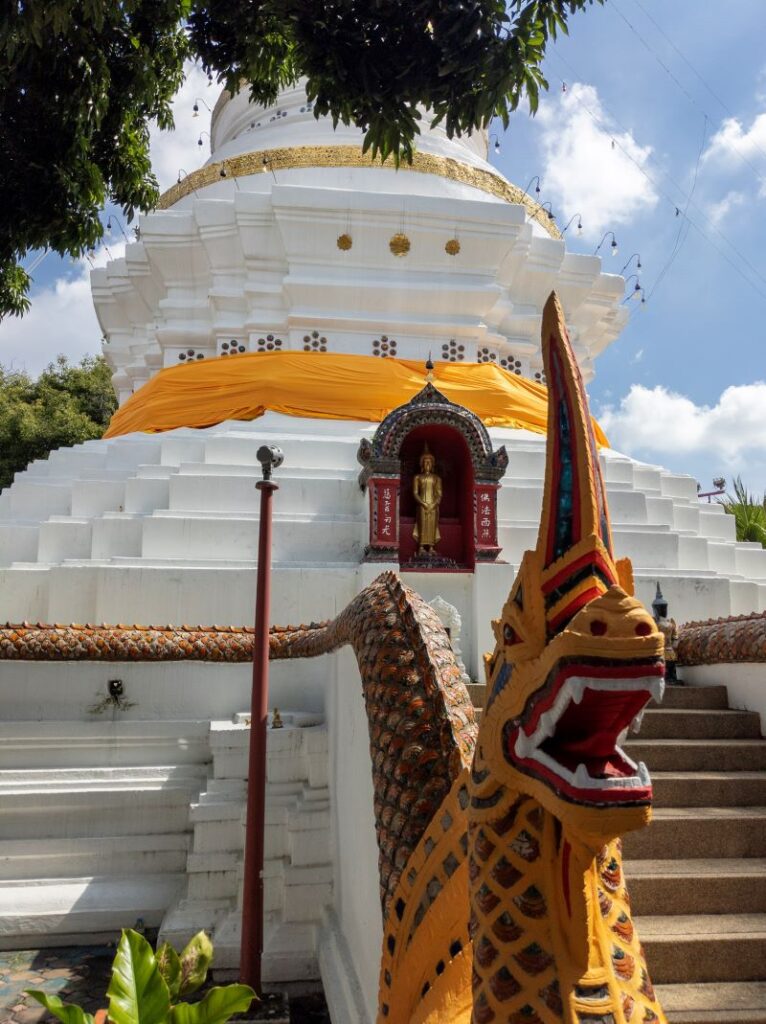
What makes this one of the best temples in Chiang Mai is that in one corner there is a large area with meticulously positioned figurines. They are placed all around some amazing gardening and water features.
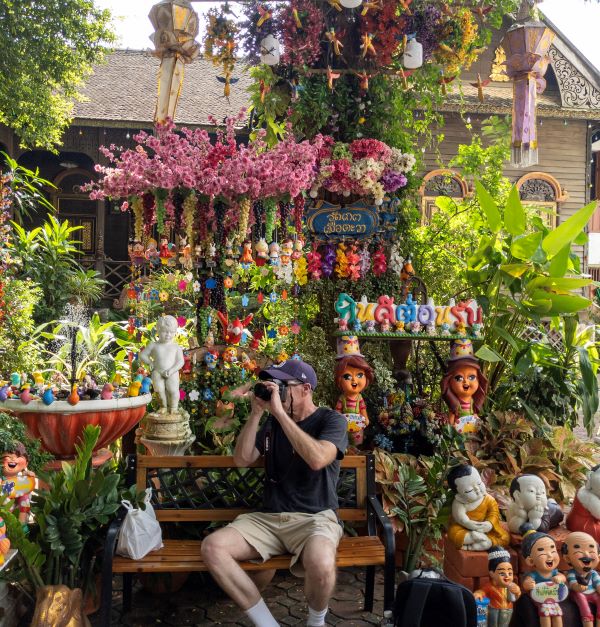
Wat Chedi Luang
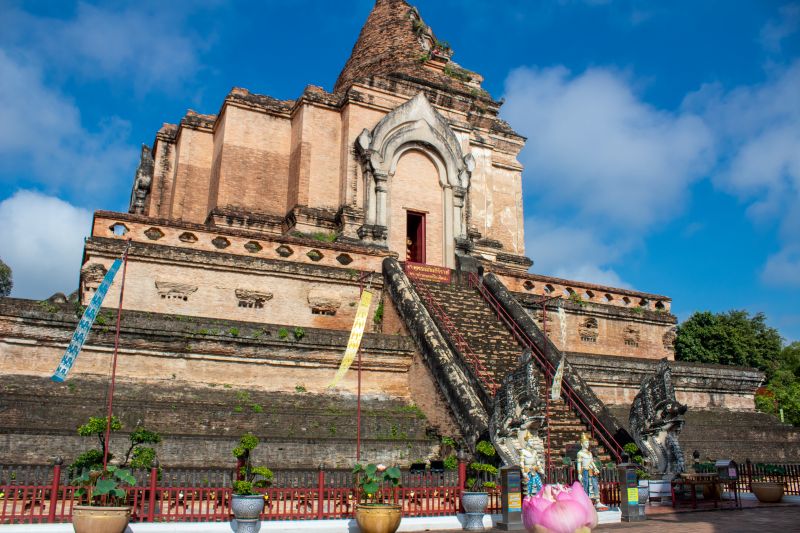
Without a doubt, Wat Chedi Luang Varaviharn is one of the most visited and photographed temples in Chiang Mai. One reason that makes it ideal is that is site right in the center of the Old City, making it easy to find, and walk to.
Since ‘luang’ in northern Thailand means large, the chedi is the largest in Chiang Mai, reaching 98 meters tall. The construction of the original chedi was completed in 1481 during the reign of King Mengrai. However an earthquake in 1545 meant the current one is a restoration of the original.
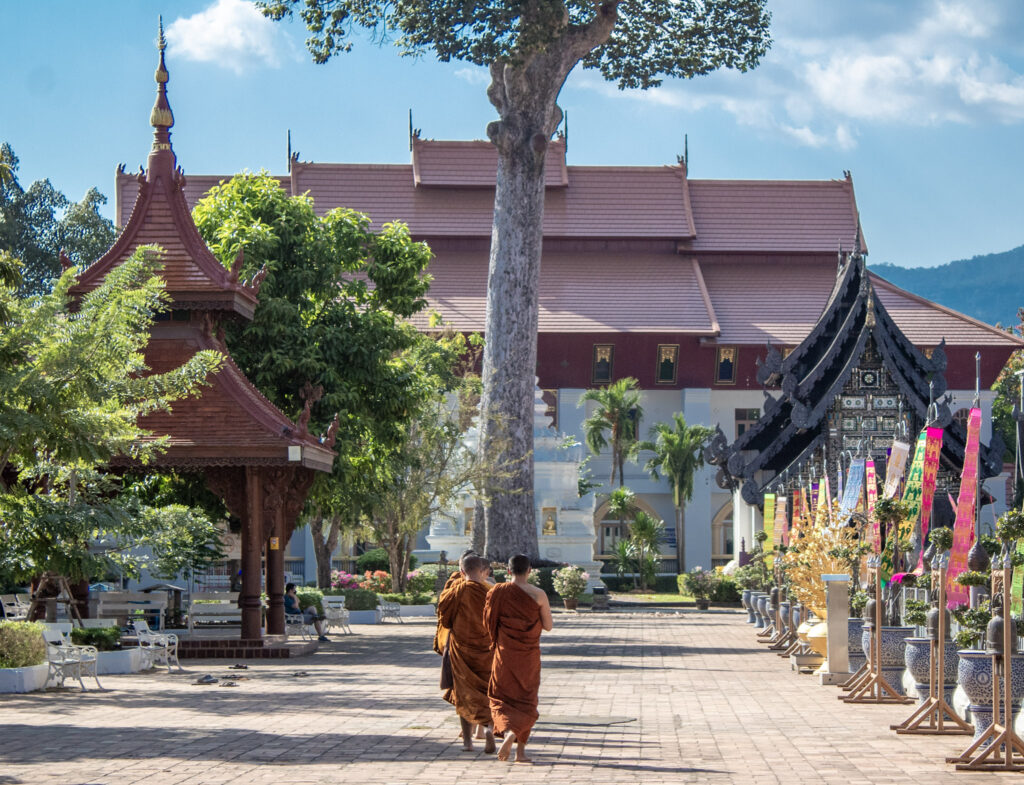
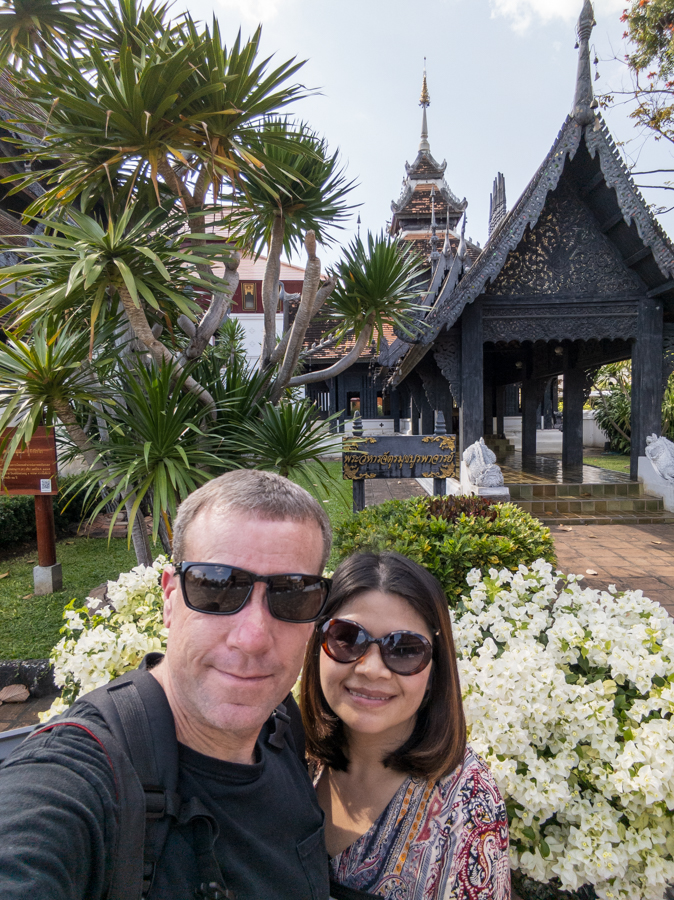
Walking the grounds is bit like Wat Umong, in that is is large, with many buildings and attractions to see and photograph. The main Chedi may be the main attraction to see, however I find all the smaller buildings even more interesting. You can spend hours looking at everything and reading all the interesting posted information.
Wat Chedi Luang hosts monk chats every day and you are encouraged to ask questions. Tourists are invited to speak with monks (usually novices) and ask them anything about Buddhism or Thailand.
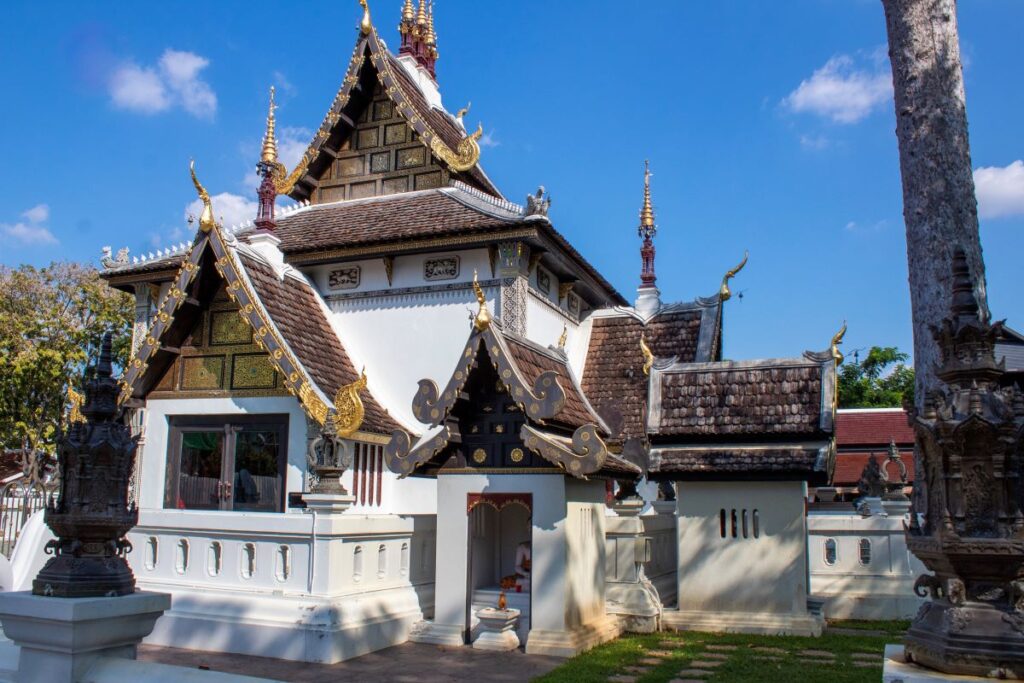
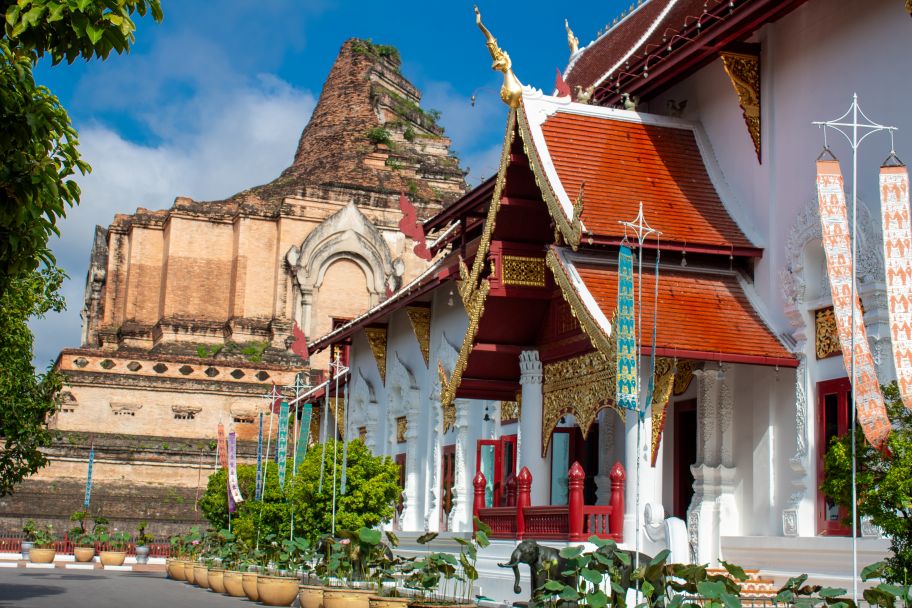
Wat Phan Tao
A bonus to Wat Chedi Luang, is that Wat Phan Tao is right next door for some extra local culture. This may not be on other must see temples lists. But I enjoy it because it is different than most.
Wat Phan Tao means “The Monastery of a Thousand Kilns”. According to the noted British author and photographer, Michael Freeman, this is probably due to the fact that the site was used for the casting of Buddha images intended for Wat Chedi Luang.
The building was originally constructed not as a monastery, but as a royal palace building (ho kham) for the ruler of Chiang Mai, Chao Mahawong, who used the structure from 1846 to 1854.
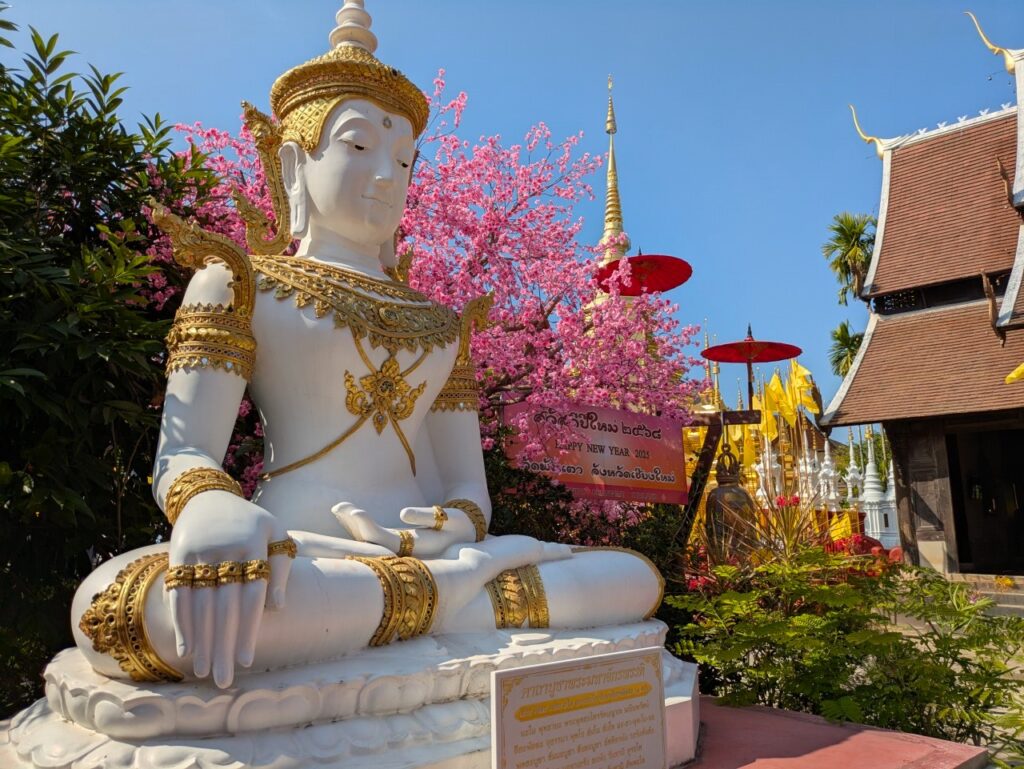
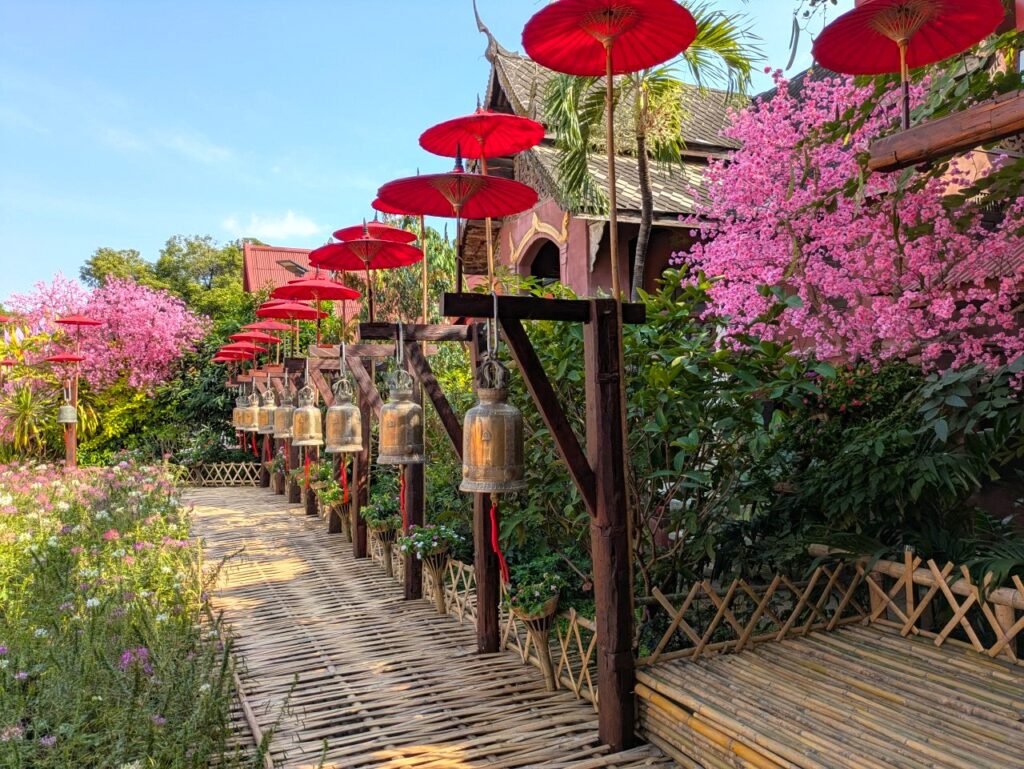
The Viharn (Buddhist assembly hall), is made up of teak. The plaque near the entrance states that the viharn is,- “..the most beautiful teak viharn in Chiang Mai”. The Chedi used to be dark colored, but has since undergone a transition and now sparkles in the sunlight. the temple is also home to a well-known Buddhist teaching school, the Dhammamethisueksa School, where novice monks and others receive instruction on Buddhism.
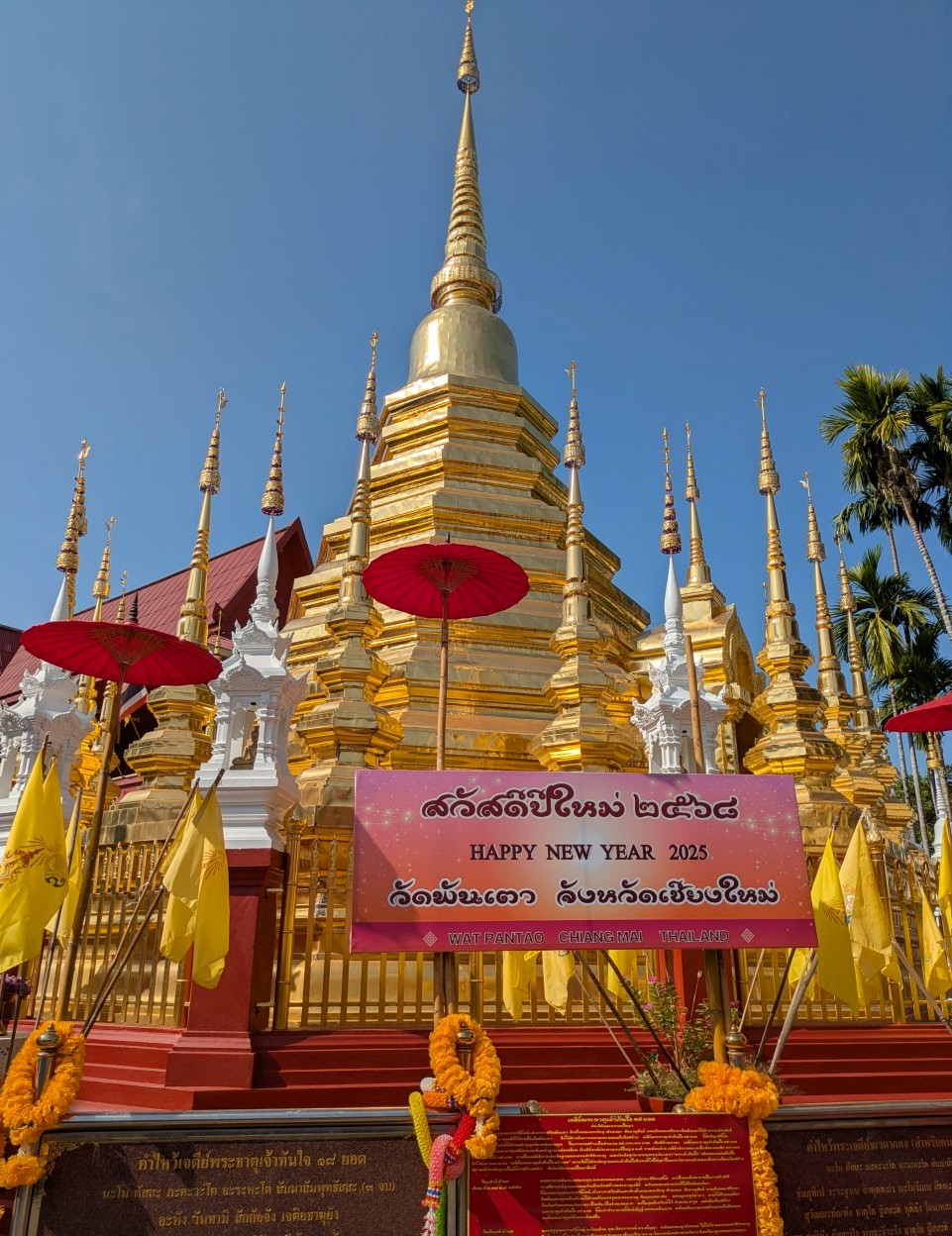
Wat Pra Singh
Wat Pra Singh Woramahawihan is another easy one of our must see temples to tour in the old city of Chiang Mai. The temple grounds are located off the main road of Rachadamnoen road, west of the Tha Phae Gate. Also just minutes walk for Wat Chedi Luang and the Three Kings Monument.
Wat Pra Singh was formerly called Wat Lee Chiang, over 700 years ago. It was constructed by King Phayoo of the Mengrai Dynasty. In B.E. 2315 (1772 A.D.) this wat received a major reconstruction by King Kavila.
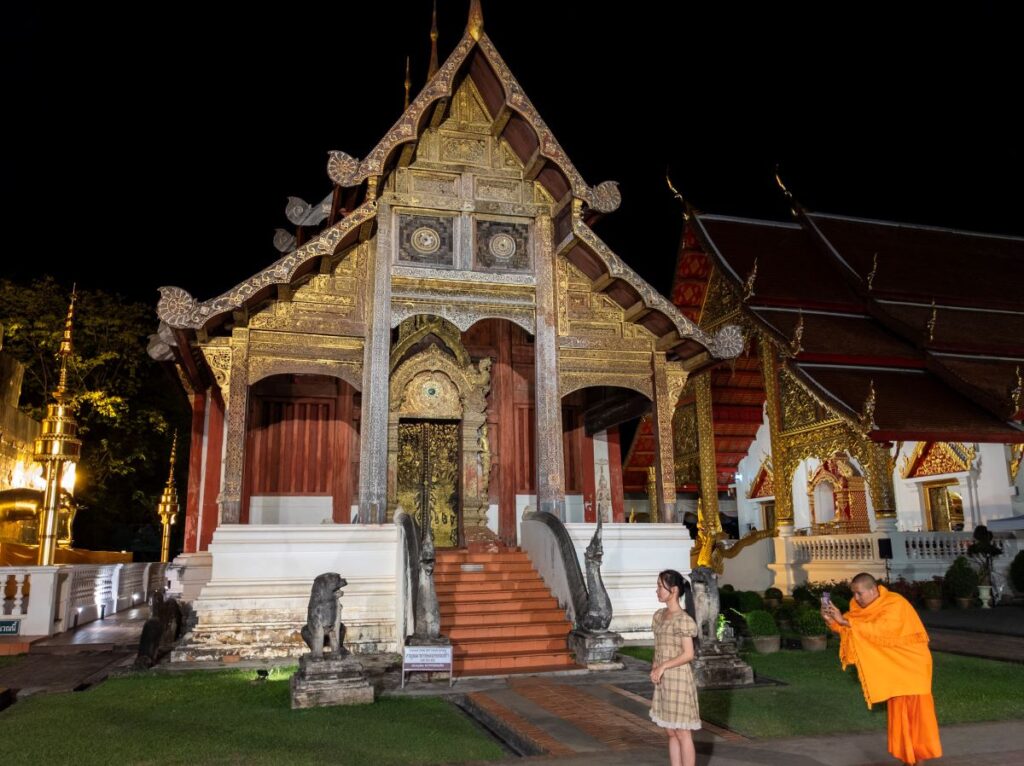
Beside Pra Singh, this wat has the other important Buddha image called Pra Thongtip cast in B.E. 2020 (1477 A.D.). It is of the early Chiang Saen style and craftmanship and made of the alloy of golf and copper.
Phra Singh is an abbreviated form of Phra-Put-Tha-Shi-Hing and does not refer to the word Singh (“lion”). One of the more famous and visted temples in Chiang Mai, similar to Wat Chedi Luang, with multiple sights to see on the complex.
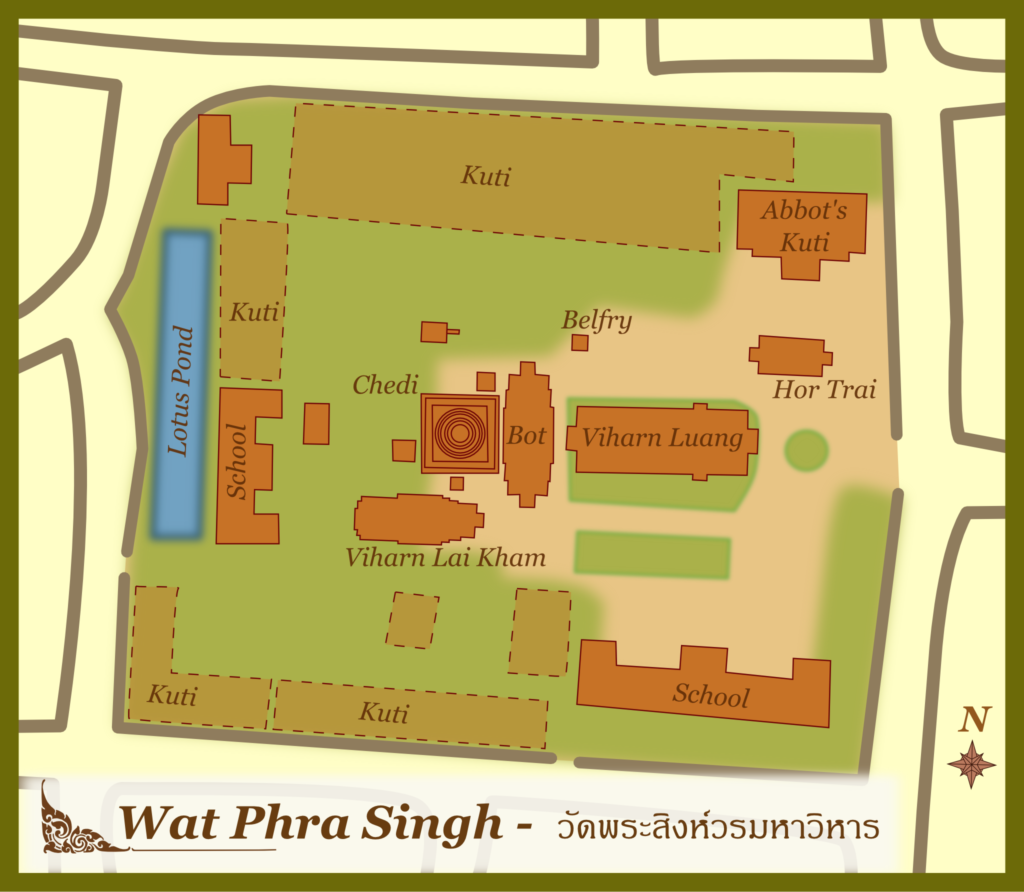
This is one of the most popular temples in all of Northern Thailand. Tour buses come and go all day. So I would try to visit on a weekday. We have gone at night a few times as well which gives you another perspective.
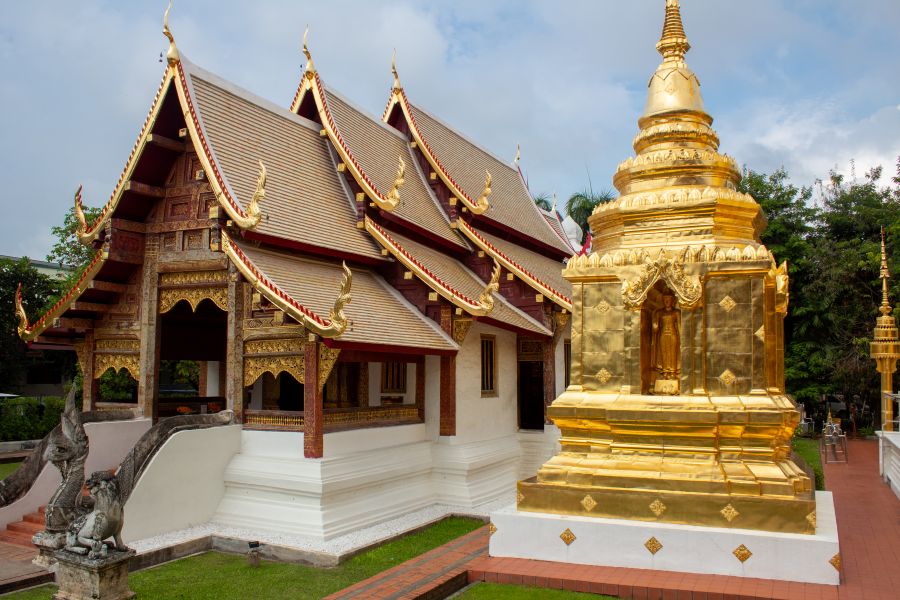
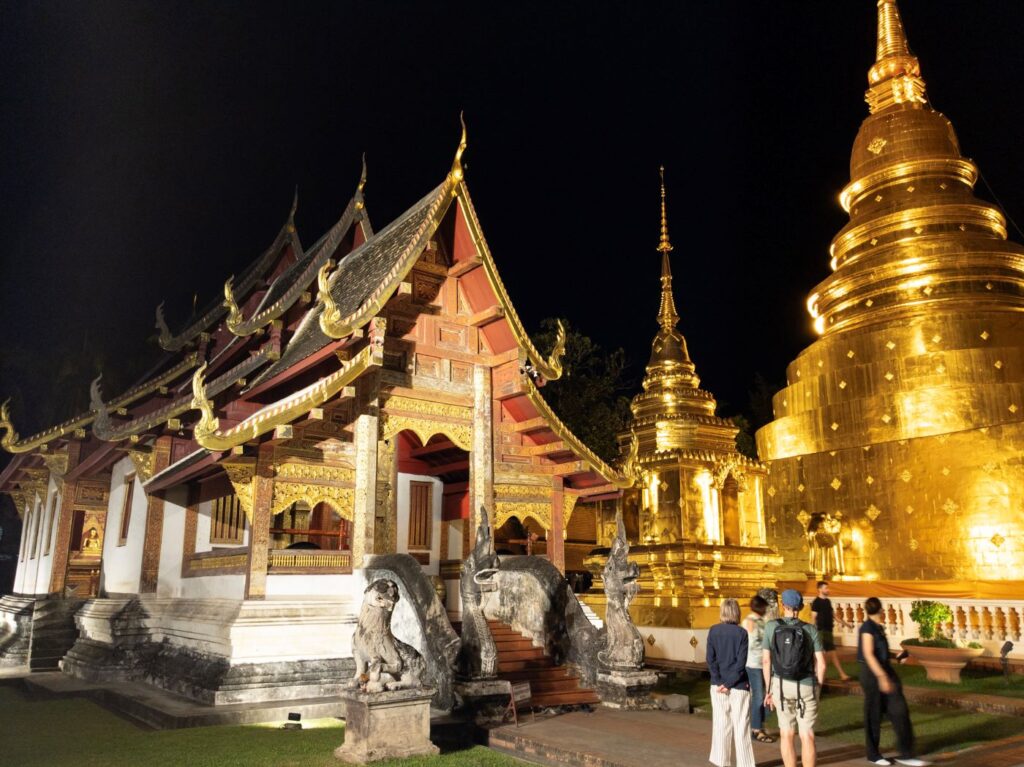
Vihan Lai Kham, pictured above on the left, is the main attraction of the complex. It was built in 1345 to house the Phra Buddha Singh statue and it is a prime example of classical Lanna architecture.
During Songkran festival, the Buddha status is taken from this Vihan and paraded through the streets of Chiang Mai. The chedi was built to house the ashes of King Mangrai’s father, King Kham Fu.
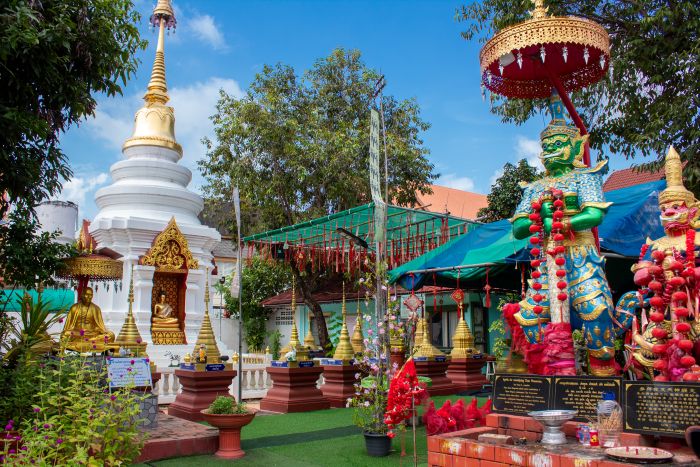
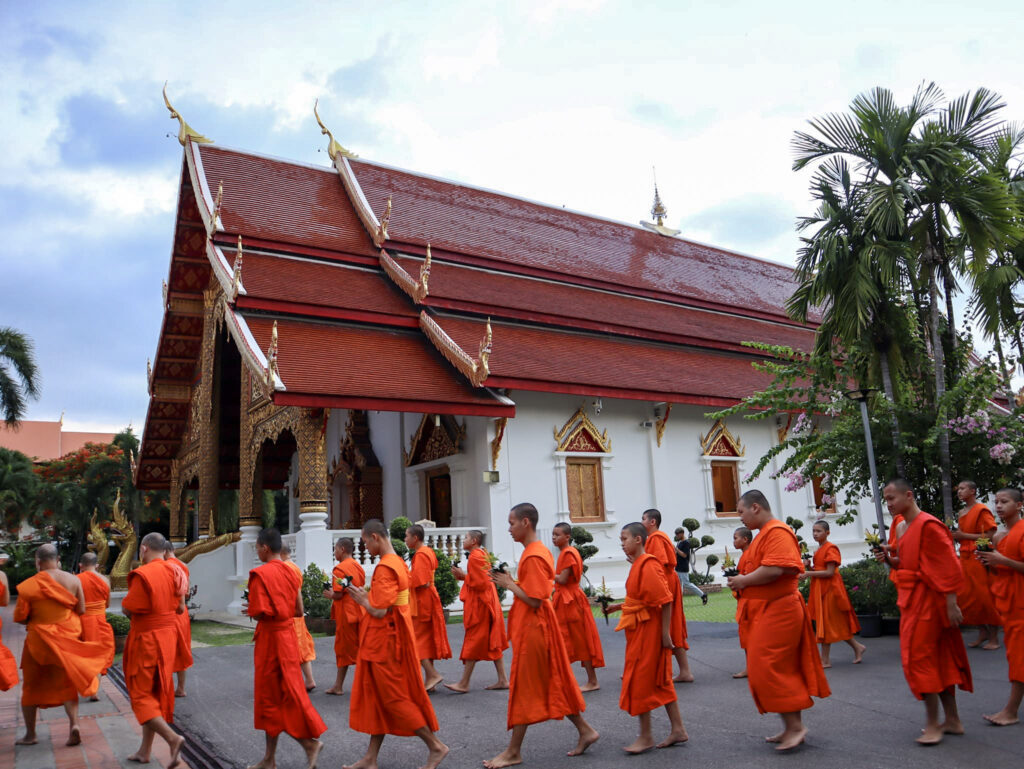
Wat Phra That Doi Suthep
Doi Suthep, as it is commonly called, is considered the top must see temples in Chiang Mai. Heavily visited, it is located in Doi Suthep-Pui National Park. However it’s only about a 14km drive up the mountain from Chiang Mai city center.
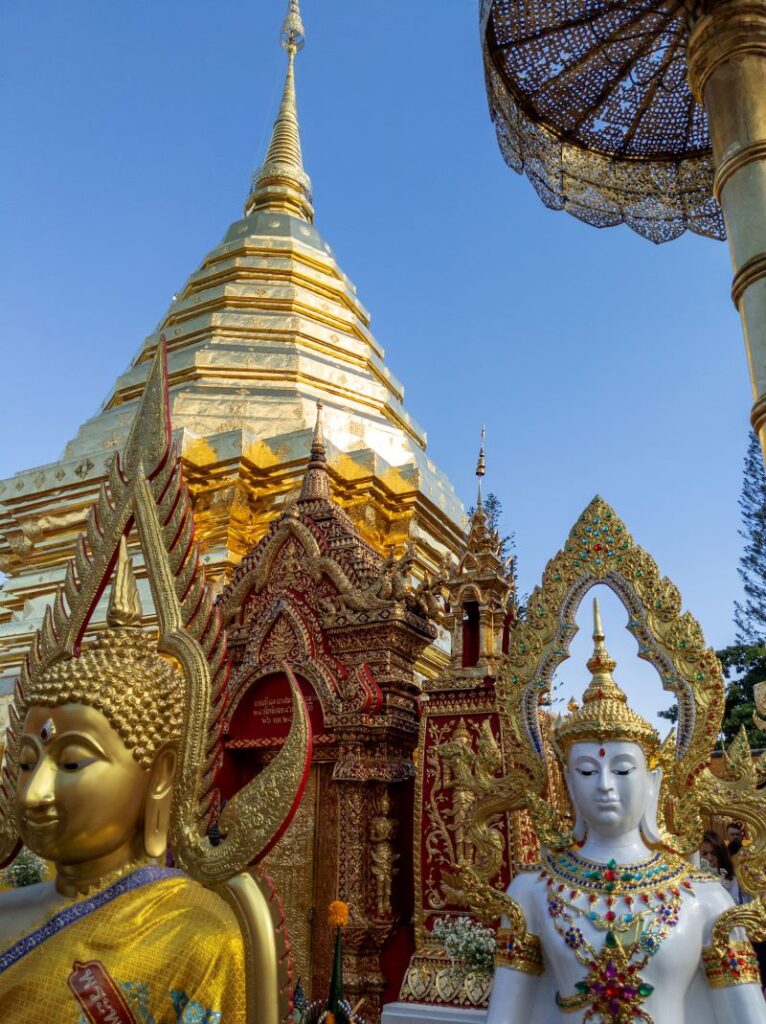
Sitting at an elevation of about 1100m (3500), you are treated with sweeping views of Chiang Mai from the grounds of the temple. From the parking areas, the temple is reached by walking up 309 step steep stairs. Dress accordingly, no shorts allowed and shoulders must be covered. It is considered a sacred site to Thai.
The entrance area itself is very impressive, and set up for tourism. From the parking areas, the temple is reached by walking up 309 step steep stairs. There is a tram type ride for those who don’t want to do the steps.
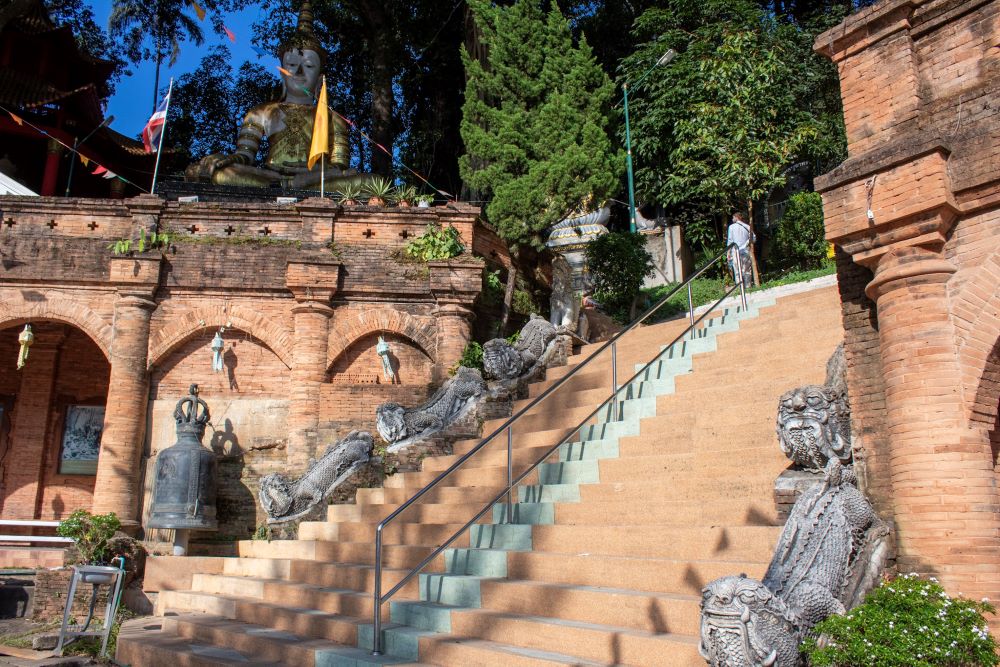
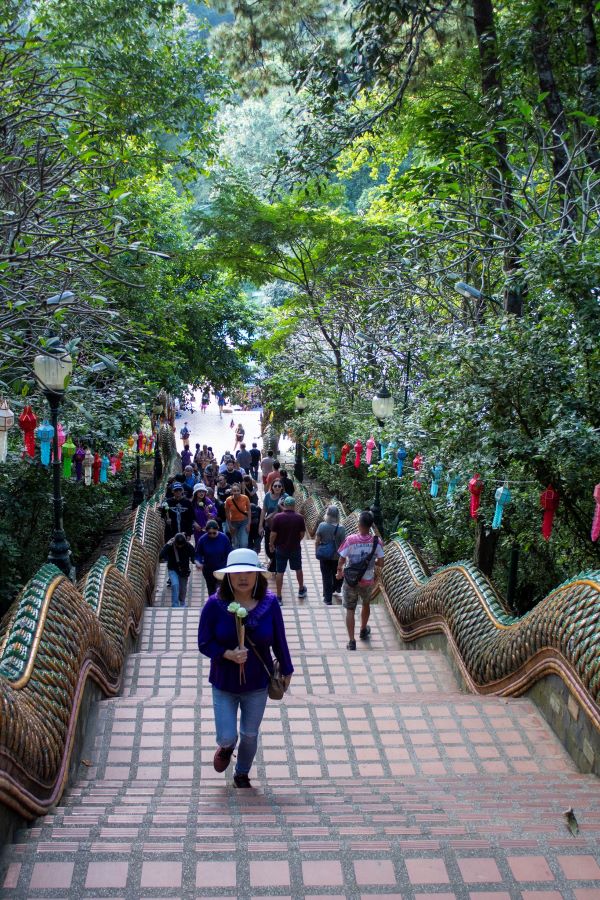
The name of the Temple (Wat Phra That Doi Suthep) actually explains what the temple has. Phra entails of an honorific Buddha image, and That means a relic. The original gold plated chedi is the most holy area of the temple grounds. Within the site are pagodas, statues, bells, a museum, and shrines.
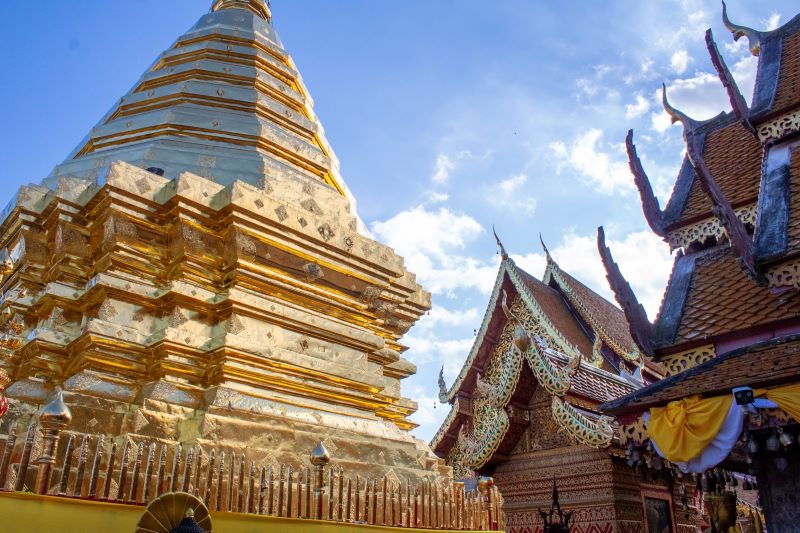
This temple has a special place in our hearts. My wife took me here on our first date! It has special importance to Thai, and she wanted to share that with me.
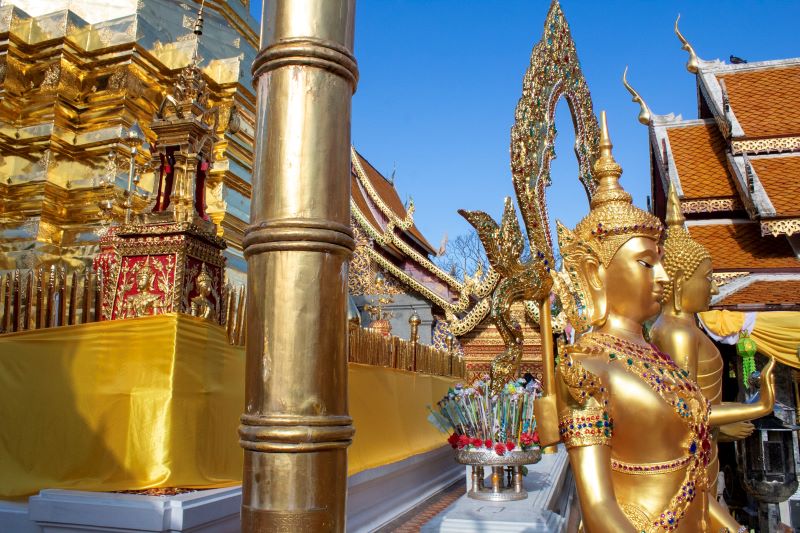
Wat Chiang Man
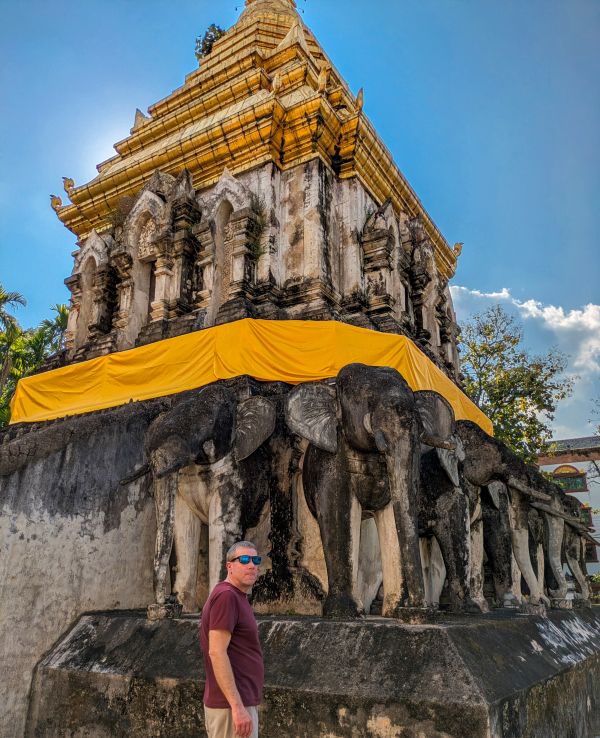
The Chedi (seen above) is the oldest construction of the complex. Chedi Chang Lom, is often called the ‘Elephant Chedi’. Wat Chiang Man, sometimes written as Wat Chaing Mun, is the oldest temple in Chiang Mai, dating back to 1297.
Built by King Mangrai, who was the first King of the Lanna Kingdom. Wat Chiang Man was built as the Temple he used inside the walls of the current Old City, while they built the new city of Chiang Mai. Which would then serve as the capital of the Lanna Kingdom util 1558.
Easily accessible is Wat Chiang Man. Just a short walk from Wat Chedi Luang and the Three Kings Monument. So it is easy to visit these and many more great temples in the same afternoon.
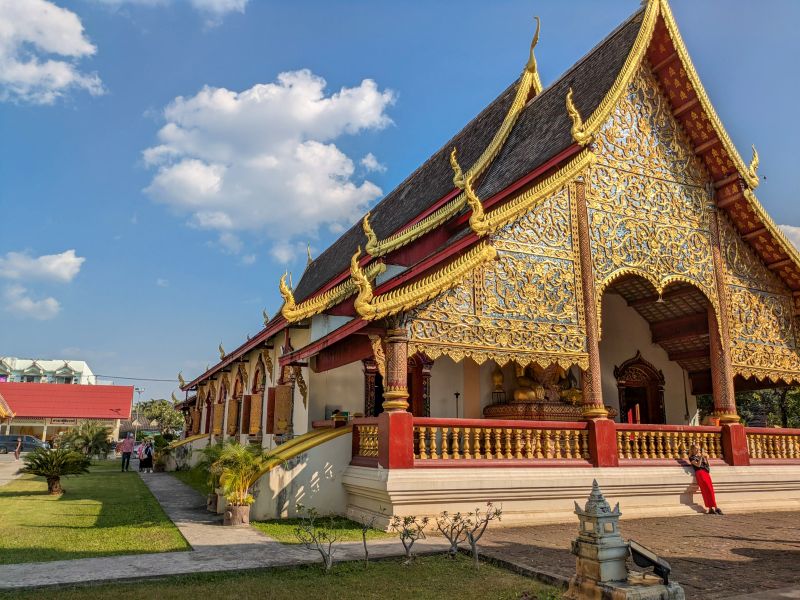
Chiang Mai’s Office of Culture launched a ‘cultural route’ to promote Chiang Mai’s religious culture. Nine sites at seven temples have been selected for this route including Wat Sua Dok, Wat Phra Singh, Wat Chedi Luang, Wat Phra That Doi Suthep, Wat Phrathatsrijomtong, Wat Jed Yod, Wat Chiang Man.
To learn more about the history of these must see temples, visit the Cultural Center, and the Three Kings Monument. Easy to find, it is located right in the middle of the old city close to Wat Chedi Luang. Visit Chiang Mai Heritage Center for more information on the four museums worth visiting. Bonus, you can visit the Three Kings Monument, at the same location.
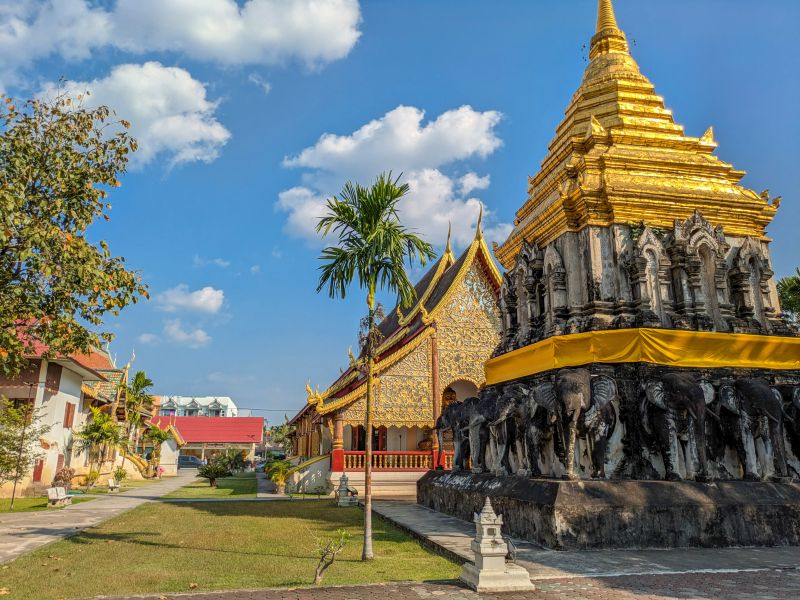
Wat Mahawan Temple
Mahawan temple is not on many articles most see temples list, except mine. For one, I am talking about one’s you can easily walk to. But also this one to me is really cool looking. The impressive white Chedi is maybe the highlight.
It is also very easy to walk to for a quick look at a temple close to Tha Phae Gate. If you go east on Tha Pha Road towards Chinatown, you will pass Wat Mahawan on the right side of the road.
Despite not being very large or full of tourists, I think it is worth visiting as the temple has both Lanna and Burmese style buildings and many sculptures of mythical creatures. Several gate houses in the surrounding wall are guarded by Chinthe, mythological lions often found in Burmese temples.
Behind the principal assembly hall (viharn), stands the attractive chedi, ornamented with very detailed stucco work. The Burmese style chedi is enclosed by a low crenellated wall, at each of its corners stands a large guardian Chinthe.
Towards the back of the temple you will find a place to get a massage. I have not tried it, but reviews are good.
We hope this helps plan you travels to Chiang Mai. To learn a lot more, our 2026 Travel Guide is here!
